

New


Tacoma opens 4km Hilltop extension
Copenhagen welcomes new Avenio UK’s light rail recovery continues…


TWO days of interactive debates... EIGHT hours of dedicated networking... ONE place to be



New


Tacoma opens 4km Hilltop extension
Copenhagen welcomes new Avenio UK’s light rail recovery continues…


TWO days of interactive debates... EIGHT hours of dedicated networking... ONE place to be
The European Light Rail Congress brings together key decision makers and leading professionals from across Europe for two days of debate covering the role of technology in the development of sustainable urban travel.
With presentations and exhibitions from some of the industry’s most innovative suppliers and service providers, this congress also includes a technical visit and over eight hours of networking sessions.
For 2024 we are taking the congress to the beautiful Spanish city of Seville, home of the Metro de Sevilla system. Both metro and trams run throughout the city providing modern and efficient public transport, with safety and the environment being key factors which contribute to improving the quality of life of the citizens of Seville and the surrounding areas.
The event will be held at the Hotel Melia Lebreros, which provides a superb conference centre that offers everything under one roof for everyone to enjoy. We will be working with our partners once again to offer a superb behind-the-scenes depot visit for delegates; and have also arranged an evening reception with some fantastic food and drinks to allow for maximum networking opportunities.
ORGANISED BY SUPPORTED BY
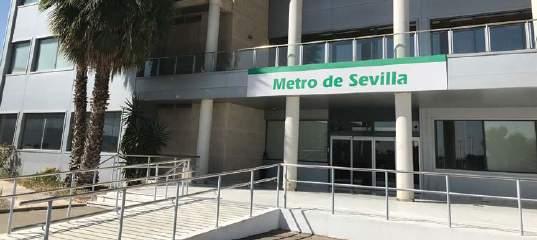



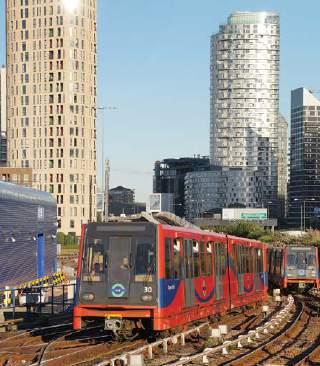
416
NEWS 412
Extension to Hilltop opens in Tacoma; Fleet deliveres start in Copenhagen; DART switches focus from second subway; UK light rail recovery continues.
DLR: LONDON' S NEW TRAMS 416
Exciting times for the UK capital are ahead, with a fleet of new trains coming – but the big question is, who will operate them? Howard Johnston finds out more.
A h EATED DEBATE 421
Global warming provides many challenges for transport operators. SYSTRA is helping to lead the way in fighting these.
BOLOGNA' S NEW TRAMWAy 423
Italy’s long-term love affair with the car could be at an end... Paolo Marchetti puts forward the case for tramways, and why their time is now.

433
429
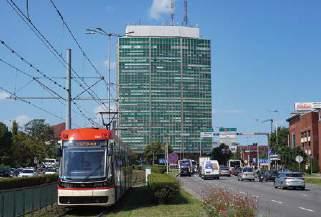
GDA Ń S k 429
Andrew Thompson visits the Polish city on the Baltic coast to see what a difference the recent complete low-floor fleet conversion has made.
SySTEMS FACTFILE: kOŠICE 433
Expansion and modernisation have most recently characterised the system in this Slovakian town, one of just two in the country to maintain a tramway.
WORLDWIDE REVIEW 439
Cochabamba extension opens; T12 trial operation starts in Paris; Aarhus tenders.
MAILBOx 443
Could the Routemaster rival the Tatra’s significance?; Thoughts on Venice.
CLASSIC TRAMS: TTA 444 Mike Russell explores a Belgian renaissance.

While nations worldwide unquestionably recognise the benefits of light rail as the key driver of urban public transport, the UK has never quite got it.
It was hardly a surprise to anyone when on 4 October Prime Minister Rishi Sunak pulled the plug on the proposed northern section of the HS2 high speed line between Birmingham in the heart of England, to Manchester, the next largest city, along with the fork into the East Midlands. Why? The price of GBP50bn (EUR58bn) – and rising – is such a drain on the public purse when other projects around Britain can’t be proceeded with.
Sunak, whose political party is currently at risk of losing the 2024 General Election, has pledged that the saved money will stay in transport. Light rail will thankfully get a slice of it, but the government doesn’t have many fresh ideas... actually hardly any at all. Perhaps Sunak’s team should thumb through the pages of TAUT for some inspiration.
The good news is that Leeds is back on the list, plus expansion for Nottingham Express Transit, Manchester Metrolink, and seeing the current West Midlands line finished. But what about reviving the schemes for Bristol, Liverpool and Southampton, and then looking at London’s Cross River Tram, Glasgow, Cambridge, and literally dozens of other places where cars still clog the streets?
As an aside, it is worth remembering that 1923 – 100 years ago – was when the UK’s light rail networks (they were ‘ tramways’ in those days) reached their maximum length of 2624 miles (4223km). Today, including London’s Docklands Light Railway and the Tyne and Wear Metro, the total distance is 231 miles (327km). There’s still an awful lot of catching up to do.
COVER:
the official journal of the light rail transit Association

NOVEMBER 2023 Vol. 86 No. 1031 www.tautonline.com
EDITORIAL
Editor – Matt Johnston matt@mainspring.co.uk
Associ At E Editor – Tony Streeter tony.streeter@mainspring.co.uk
WorldW id E Editor – Michael Taplin miketap@mainspring.co.uk
N EW s Editor – John Symons johnsymons@mainspring.co.uk
sEN ior c o N tributor s –howard Johnston , Neil Pulling
WO rldW id E C ONT rib UTO r S r ichard Felski, Andrew Grahl, Andrew Moglestue, Paul Nicholson, Herbert Pence, Mike russell, Nikolai s emyonov, Alain s enut, Vic simons, Andrew t hompson, Witold urbanowicz, bill Vigrass, Francis Wagner, t homas Wagner, Philip Webb. Productio N – Lanna Blyth
tel: +44 (0)1733 367604 production@mainspring.co.uk
d E si GN – Debbie Nolan
A Dv ERTI s I ng
co MME rci A l M ANAGE r – Geoff Butler tel: +44 (0)1733 367610 geoff@mainspring.co.uk
Tramways & Urban Transit 13 o rton Enterprise centre, b akewell road, Peterborough PE2 6X u, u K
Tramways & Urban Transit is published by Mainspring on behalf of the lrtA on the third Friday of each month preceding the cover date.
LRTA MEMBERS h IP (with TAUT subscription)
Tramways & Urban Transit is sent free to all paid-up members of the l ight r ail t ransit Association.
lrtA WE bsit E AN d di A rY Tim kendell webmaster@lrta.org meetings@lrta.org
sU bsc RI p TIO ns, MEM b ER s HI p A n D b Ack I ss UE s lrtA Membership s ecretary ( d ept t06), 38 Wolseley road, s ale M33 7Au, u K. tel: +44 (0)117 951 7785 membership@lrta.org Website: www.lrta.org
f OR c OR p ORATE sU bsc RI p TIO ns v I s IT www.mainspring.co.uk
LRTA REGISTERED OFFICE
40 Fonthill road, Hove, bN3 6H d, u K. Private company limited by guarantee, No. 5072319 in England and Wales.
lrtA cHA ir MAN – Paul Rowen chair@lrta.org
© lrtA 2023
Articles are submitted on the understanding they may also be used on our websites or in other media. A contribution is accepted on the basis that its author is responsible for the opinions expressed in it, and such opinions are not those of the LRTA or Mainspring. All rights reserved. No part of this magazine may be reproduced or transmitted in any form by any means, electronic or mechanical, including photocopying, recording or by any information storage and retrieval system, without prior permission in writing from the copyright owner. Multiple copying of the contents of the magazine without prior written approval is not permitted.
Matt Johnston, Editor
t he Manson Group l imited, st Albans, Herts A l 3 6PZ
DISTRIBUTION
Warners (Midlands), b ourne, l incs PE10 9PH, u K
Public services on Tacoma’s T Line 3.9km (2.4-mile) Hilltop Extension commenced on 16 September. Work on the project to take the US route from the city centre to Hilltop via Tacoma General Hospital and St Joseph Medical Center began in November 2018.
The USD217m (EUR205m) project was originally expected to open in early 2023 but construction issues delayed completion; testing did not start until July 2023.
The extension required extra trams and four new Brookville Liberty vehicles were ordered,
in a deal worth USD26.5m. Delivered in 2022, they entered service in July and now help provide a ten-minute service across the whole of the network.
The T Line originally linked Tacoma Dome station and the city centre and opened on 22 August 2003. Services were provided by three Škoda T10 trams. A 5.6km (3.5mile) extension to Tacoma Community College is planned that will improve the line’s frequency to every six minutes.
Tacoma, in Washington state, once boasted a 201km (125-mile) network of street- and cable-cars. However, this closed in 1938.

Polish manufacturer PESA has received its biggest ever export order. It is to build 132 Twist trams (with an option for up to 30 more) for Jerusalem’s Blue Line network, in a deal worth NIS1.6bn (EUR400m).
The new trams will be 33m long, three-section, low-floor cars. They will be single-ended but double-sided and are expected to operate in pairs, coupled back-to-back. They will be housed at a depot at Malkah.
The 31km (19.3-mile) Blue Line network is being built by
the JTrain consortium (Danya Cebus, Dan and COMSA) under a seven-year PPP contract. The three Blue routes will use a 2km (1.2-mile) subway under the city centre. The NIS9bn (EUR4bn) system is due to open in 2028-30.
Meanwhile, CAF is supplying new Urbos trams to both Jerusalem’s 13.9km (8.6-mile) Red Line, which is being extended, and the 19.6km (12.2mile) Green Line, expected to open in 2025. These trams will complement the Alstom stock already in service.
The UK’s West Midlands Metro’s new Wolverhampton railway station opened on Sunday 17 September. The service frequency is every ten minutes, until early evening, starting from Wednesbury Parkway at 04.56

The Slovak capital of Bratislava unveiled two new Škoda products at Jurajov Dvor depot on 16 August: pioneer 29T3 ForCity Plus tram 7432 and a new Škoda trolleybus. The tram, the first of 30, was given its permit to take to the streets on 28 August.
Although built by the same manufacturer, the tram and trolleybus came from different factories: the latter is from the Škoda’s works in Plzen whereas the tram was built by Škoda Ekova, a plant in the former tramway workshops in Ostrava.
The Škoda 29T3 is similar to the 30 29T2 that were delivered
from Plzen in 2015-16, but incorporate a new braking system, a stronger front structure and coloured seating to highlight spaces for passengers with reduced mobility.
Tram 7432 will undertake a 14 000km (8700-mile) testing programme. This involves running 7000km (4349 miles) without passengers and 7000km with passengers.
Bratislava’s tram network dates back to 1895. The 42km (26-mile) metre-gauge network comprises five lines. Its fleet of 211 trams includes 115 Tatras built before 1992.
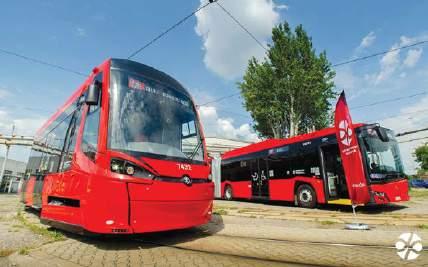
Škoda 29T3
ForCity Plus 7432 is unveiled to the press on 16 August DPMB
and Edgbaston Village at 05.15. Trams on Saturdays run until 01.00. There is an intermediate stop at Piper’s Row.
The project has been dogged by problems. It is at least two years behind schedule and
many millions of pounds over budget. The full connection at Wolverhampton St George’s is still not finished and will not be ready for some time.
Daily tram driver training has intensified since 29 August, but not without incident. A failed set of traffic lights for over an hour
on one day caused long queues of cars and left trams caught up.
There were different problems on the afternoon of 31 August, when tram 42 was involved in a collision with an unmarked police car on Bilston Street Island. There were no injuries, but both vehicles were damaged.
Dallas Area Rapid Transit has dropped its USD1.7bn (EUR1.6bn) relief line subway plan for financial reasons. This project to double the system’s capacity by creating a second line through the central area has been in the pipeline since 1990. The final alignment, which included a new station under Pacific Park, was chosen in February 2022 and design work was 30% complete at the time the scheme was shelved.
However, ridership is only 68%
Revenue services on the elevated Blue Line in Lagos started on 4 September… over seven months after it was officially inaugurated! The 13km (eight-mile) line links Marina and Mile 2 through Nigeria’s most populous city, with five stations.
Trials have taken place since 24 January’s inauguration with four-car Metro train sets working in push-pull mode with a diesel locomotive; TAUT understands that this method of operation will continue.
The 15 standard gauge EMUs, built by Chinese manufacturer CNR Dalian in 2015, are designed to operate using 750V DC third-rail. Despite this, the line is due to be extended to the western suburb of Okokomaiko, bringing the total length to 27km (16.8 miles).
Czech engineering giant Škoda has set its sights on India’s rapidly expanding public transport sector. It signed a memorandum of understanding with TATA AutoComp Systems in August to supply the Indian rail, metro and bus sectors, starting with electrical components.

of pre-pandemic levels, leading to a reduced need to relieve the single, surface, line through the Bryan Street transit mall. Red and Blue Line platforms that can now accommodate three-car trains have made an impact too.
DART board member Patrick Kennedy said: “Taking it off the 20-year financial plan does not mean it is dead. It can be added back at any time.
“Removing the project from the financial plan allows DART to spend on other projects such as
new trains, upgrading the signal system, additional security, cleanliness and other operational services aimed at improving reliability.”
DART’s network comprises four lines over 149.7km (93 miles) of standard gauge track. The system dates from 1996 and is worked by 163 Kinki Sharyo LRVs. In addition, the city owns a 4km (2.5-mile) tramway built in 2015, while McKinney Avenue Transit Authority runs a 7.4km (4.6-mile) heritage tramway.
Services on the new 6km (3.7-mile) section of the Polish city of Toru ń’s tram network commenced on 1 September. An opening ceremony for the extension to Heweliusza in Jar in the northern suburbs took place on 25 August and free rides were offered. Lines 3 and 6 now serve 13 new stops.
Work started in the summer of 2018 and testing started on 3 August. Of its 6km length, 2.6km
(1.6 miles) of the extension run on green reserved track. The PLN212m (EUR45.8m) extension is part of a PLN462m programme of improvement to the city’s public transport.
Trams have run in Toru ń since 1891. The network’s last extension to Nicolaus Copernicus University opened in 2014. Its fleet comprises 72 metre-gauge trams, including 17 PESA Swing low-floor cars.

Hyderabad metro growth plans
Initial plans for Phase III of the development of Hyderabad’s metro system have been unveiled. Proposals include building 278km (173 miles) of new lines, including eight radial routes. A new Metro line will mirror the Indian city’s Orbital Ring Road while there are extensive double-deck elevated sections that could carry both cars and metro trains. The Hindu newspaper has reported that both Aarvee Associates and SYSTRA have won contracts to prepare more detailed plans, but the project needs funding from national government before it can go ahead.
Heritage tramways praised for safety drive
Dr Lindsey Smith, HM Inspector of Railways at the Office of Road and Rail, has praised the UK’s heritage tramway sector’s willingness to engage with regulators on improving safety processes and risk management. She made her comments at a meeting of the Ultra Heritage Committee, saying that she looks forward to a closer working relationship, alongside its recently published policy document for private operations.
Lisbon tram… in London
When one of the stars of an upcoming spy film couldn’t make it to the Portuguese capital Lisboa (Lisbon) for filming, the producers moved a classic Lisbon tram to London.
Luckily for the producers of Heart of Stone, ex-Lisbon 715, built in 1930, forms part of the Southampton Tram Project collection. Car 715 was sent to London to enable filming with actress Alia Bhatt to take place. Its appearance in the film, released on Netflix on 11 August, is brief.
Osijek orders from Koncar
The Croatian city of Osijek has awarded a contract for 30 new trams with native manufacturer Koncar. The three-section TMK 2300 low-floor trams are 20.8m long and can carry 135 passengers (35 seated). The contract price is EUR55.35m. The new vehicles will replace the Pragoimex T3PV.O fleet that was delivered in 2006-07.
Illuminations extended
The 2023 Blackpool Illuminations season at the UK west coast resort began on 1 September – and has been extended once again to 2 January to capture the Christmas and New Year market. Singer and presenter Sophie Ellis-Bextor performed the Illumination Switch-on, one of the biggest events in Blackpool’s calendar.
Tram tours began the following day, with a timetable showing one Illuminated tram running twice on Mondays to Thursdays. There is increased activity on Fridays, at weekends, and during the school half term holidays.
Ridership on the UK’s light rail systems is returning after the shock of COVID-19, but is still a long way short of the figures recorded five years ago.
The latest statistics from the Government’s Office of Rail and Road reveal that 212m passengers were recorded travelling on light rail in
England in the 12 months up to the end of March 2023, a net total uplift of 23.3%. Scotland, which only has one tram system in Edinburgh, is not included in the analysis.
London features strongly in the 2022-23 LRT figures, with 53.5% of the total of the English business, thanks to a large increase in patronage of the Docklands Light Railway. The DLR has unexpectedly benefited from new interchange business following the full opening of
Toronto Transit Commission has permanently closed Line 3 from Kennedy subway station and Scarborough. The Canadian line was due to shut in November anyway, when work starts on the Toronto subway to Scarborough. However, closure came early after a derailment on 24 July. Replacement buses will run until the new subway is opened, probably in 2030.
A TTC statement said: “The decision has been made to
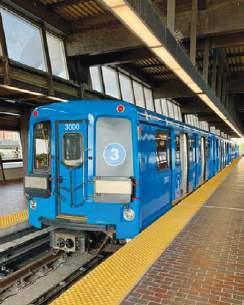
permanently close the line and begin to implement elements of the replacement plan. These measures will improve transit priority and operations, provide frequent high-capacity bus service and ensure customers can plan their trips online in September.”
Demonstrators held a mock funeral service for the line on 23 August. A formal farewell party took place on 23 September.
The 6.4km (3.9-mile) line opened in March 1985 and carried over 4m passengers a year. Its seven Bombardier automated two-car trains featured linear induction motors and SelTrac moving block signalling. Power came from third/fourth rails.
The line was originally intended to be a tramway, but the Government of Ontario, which provided most of the funding, insisted on it becoming a showcase for the Intermediate Capacity Transit System developed by its own Urban Transportation Development Corporation. This was later sold to Bombardier.
the GBP8bn (EUR9bn) Elizabeth Line to Heathrow Airport and Reading via Paddington (see feature in this issue). The DLR says it expects to surpass the 100m total in 2023-24 but has some way to go to return to the 128m-plus record ridership it recorded in 2018-19.
The best performer overall is Nottingham Express Transit, with a 58.2% increase in business to 14.4m, followed by Manchester Metrolink with a 38.5% rise to 36m. Other
statistics show there were 27.7m concessionary journeys on UK light rail in 2022-23, 23% up on the previous year’s figure of 22.6m. Manchester Metrolink bore the brunt of this potential loss with 7.7m not paying the full ticket price (Blackpool was lowest with 0.5m).
Good news is that light rail systems achieved their passenger growth without providing extra services. In the simplest terms, this means that empty seats are now being filled again.
England’s LRT network is now 354km (220 miles), with 413 stops, and a fleet of 549 trains/trams. In 2022-23, the systems combined generated GBP329m (EUR380m) of revenue, an increase of 30% without inflation adjustment. The workforce comprised 1162 drivers, 717 other on-board staff such as conductors and inspectors, and 979 maintenance staff. There were three fatalities caused by collisions and 36 severe injuries.

The 900m (0.5-mile) extension of Istanbul’s Line T5 opened on 30 August. This brings the total length of T5 to 10.1km (6.3 miles) and it now links Eminönü to Alibeyköy bus station.
There are 14 stops, including an interchange with metro line M7. The new extension included a short subway to permit interchange with Line T1, although the lines remain physically separated.
It offers a six-minute headway, 06.00-20.40.
The standard-gauge T5 runs along the west bank of the Golden Horn on the European side of Istanbul. The first section opened on 1 January 2021. Its 30 five-section Durmazlar double-ended trams use Alstom’s APS surface current collection system. This was the first time this technology was licensed to another vehicle manufacturer.
The first Siemens Avenio for København awaits unloading on 24 August. Hovedstadens Letbane
The first Siemens Avenio tram for the new København (Copenhagen) tramway arrived at Glostrup depot on 23 August. It was unloaded the next day and assembled in readiness for testing to start on the 28km (17.3-mile) system that is being built through

the Danish capital’s western suburbs. Passenger services on the Lundtofte-Ishøj line, which connects Lyngby, Harlem and Glostrup, should start in 2025.
Siemens is building the 29 fivesection, 36.9m Avenio low-floor double-ended trams at its plant at Kragujevac in Serbia. The trams are 2.65m wide, weigh 48.6t and
carry 260 passengers (64 seated). They are expected to carry 14.7m passengers a year by 2030.
Each tram is to be tested at Siemens’ Wegberg-Wildenrath testing facility in Germany before making the 800km (500mile) journey to Denmark. The delivery schedule foresees a new tram arriving every three weeks.
The completion of construction work has enabled key parts of Poland’s Silesian Trams network to return to normal. Heavily delayed track reconstruction in Malachowskiego, Sosnowiec, was completed in August and trams returned from 4 September. As a result, the triangular layout in the centre of the town has been re-opened and route changes implemented.
Two important sections of line were re-opened from 18 September: Line 3 (Makoszowy –Mikulczyce) resumed operation over its full length after the northern section was closed
for around 21 months. The main line between Zabrze (plac Wolnosci) and Gliwice depot was also reopened, thus returning Gliwice depot to operational status, and Routes 2, 4 and 5 were reopened.
The section between Zaborze (ul. Lompy) and Chebzie, previously served by Route 1, has been taken over by an extended Line 10, which now works Bytom (plac Sikorskiego) – Chorzow –Chebzie ul. Dworcowa – Zaborze, ul. Lompy, avoiding use of the turning-circle at Chebzie.
The temporary curtailment of Lines 9 (at Zgoda) and 17 (at
Demands for new trams in Russia’s second city of Sankt Peterburg (Saint Petersburg) has led to the city placing orders with alternative manufacturers. The city’s own tram factory, PK Transportnye Systemy, is
currently building two types of low-floor cars: the two-section 71-923 Bogatyr and three-section 71-931 Vityaz-M. However in order to accelerate the replacement of older, high-floor trams, the city has
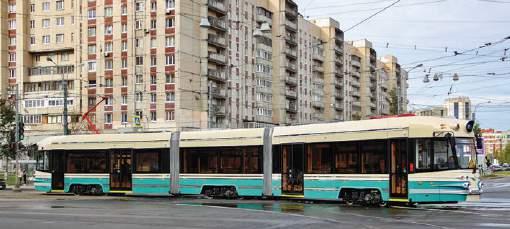
Swietochlowice, ul. Szkolna) remains in place.
Work commenced from 11 September on major reconstruction works on the long line from Bytom to Stroszek depot. All tram operation ceased from that date and Line 6 services to Bytom Medical School will be replaced by buses.
The project involves the installation of new poles, bracket arms and catenary over much of the route as well as doubling the last remaining single-track section in Tarnogorska. It is due to be completed by the end of 2023.
ordered 14 71-628 low-floor bogie trams from UKVZ of Ust-Katav. It has also ordered 42 71-431 Dostoevsky retrodesign three-section low-floor double-ended trams from Uraltransmash.
The first of both new types arrived within days of each other
Retro-design 71-431 from Uraltransmash on a test run in midSeptember. Kr1p
The first UKVZ 71-628 in the depot yard after delivery. It has been numbered 5500. Gorelektrotrans
København’s first generation tramway, from 1884, closed on 22 April 1972. Its 99 Düwag articulated trams that were just a few years old were sold to Iskandariyah (Alexandria) in Egypt, where many are still in service. Two have been repatriated to Denmark to join the Skjoldenaesholm museum.
Melbourne’s big timetable change
Yarra Trams has implemented a large timetable change from 29 October, which is designed to better reflect Melbourne’s post-COVID travel habits. Hybridworking has affected daytime travel but demand for evening services has increased.
Line 3A will cease operating but Line 3 will run daily. City Circle line 35 becomes clockwise only. Line 12 is to terminate at St Vincent Plaza, whilst Line 30 is to connect to Victoria Gardens.
Line 72 will terminate at Spencer/la Trobe Streets. Line 86 becomes Bundoora RMIT to Port Melbourne and Line 109 (perhaps renumbered) will link Box Hill and Waterfront City via La Trobe St.
on 23 August and 1 September.
The first 71-628 entered service on Line 48 on 25 September while the initial 71-431 Dostoevsky is still on test.
Sankt Peterburg boasts one of the world’s largest tram systems with 40 lines operating over a 231km (144-mile) network.

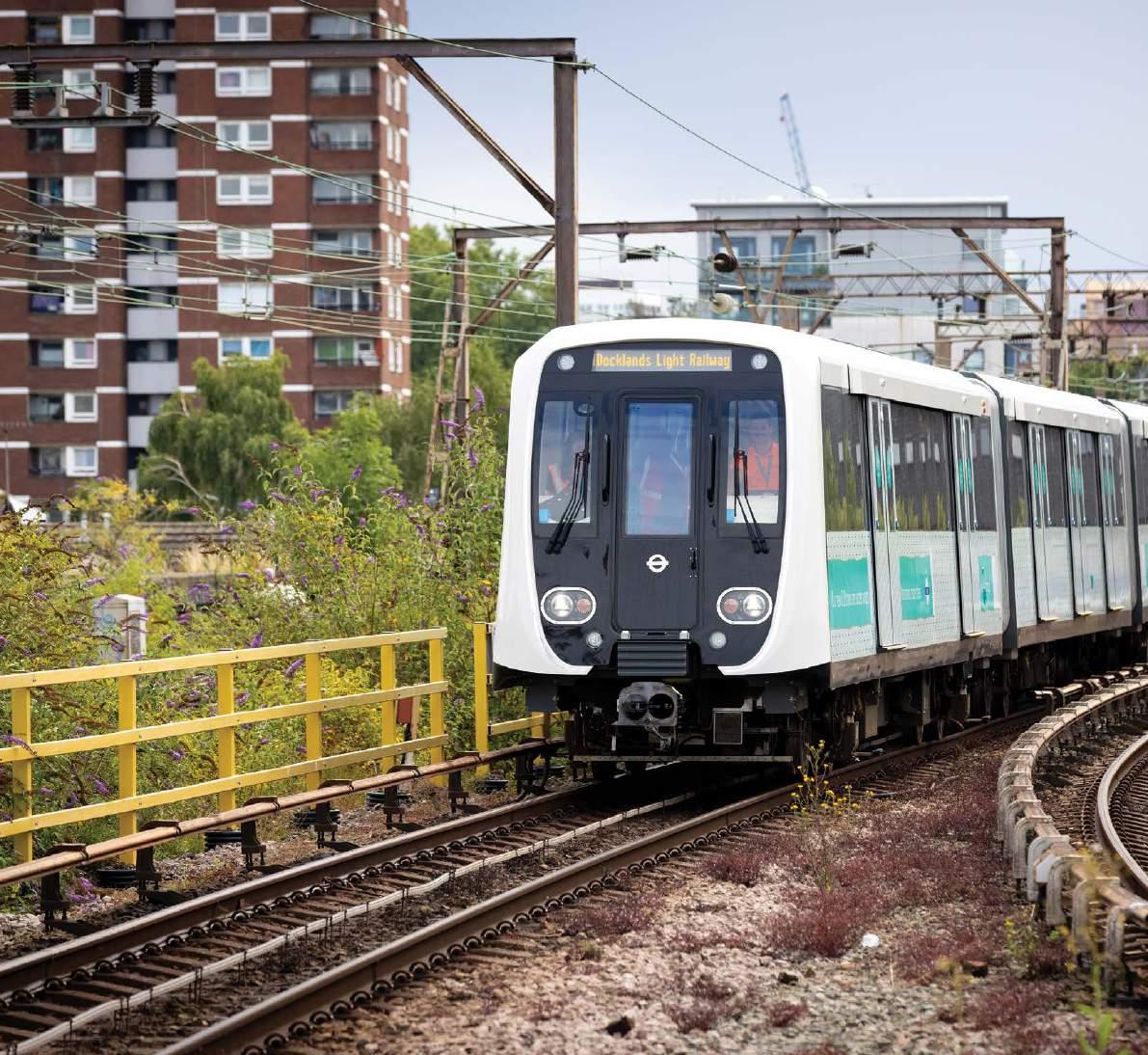
there’s an exciting 12 months ahead for light rail in the UK capital’s east end, with so much change in prospect. howard Johnston meets the docklands Light Railway’s senior managers.
Ayear of great change beckons for London’s Docklands Light Railway as it prepares for the start of a new operating contract, introduces new trains, and works hard to win back customers after the COVID pandemic.
And if this is not enough to be getting on with, there is also active talk of a major new southern extension under the River Thames to the vast new development at Thamesmead.
“I’m really excited at these prospects of growth, which if successful in the current
procurement competition, would allow us to hit the new franchise at full speed”, says Richard Graham, Managing Director of Keolis Amey Docklands (KAD). A blend of 70% Keolis and 30% Amey, KAD has been running the Docklands operations for Transport for London since December 2014. TfL takes the revenue risk, which has been unexpectedly substantial with a GBP100m (EUR116m) deficit in the 2021-22 year when COVID was at its height. As the costs of running the DLR are broadly fixed, good passenger revenue is crucial.

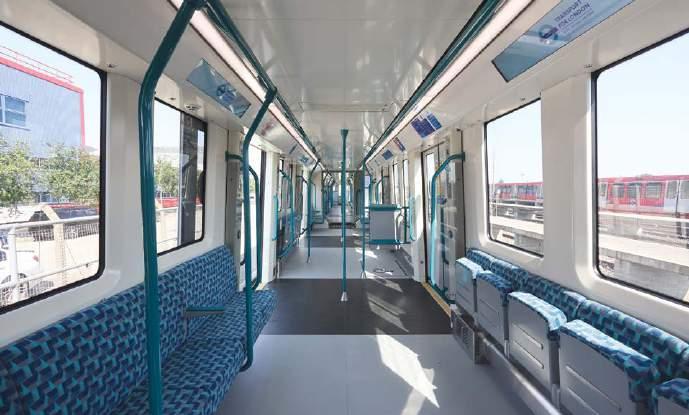
Although attempts were made to maintain the timetable, passenger numbers plummeted by two thirds, from a nearrecord 116.8m in 2019-20 to just 39.9m the following year. Business is, however, steadily returning, and there is general confidence that a 100m figure could be achieved again next year. In common with all commuterdominated transit systems, the work-at-home philosophy means that the peaks have flattened out in favour of all-day activity.
Richard Graham has been in charge of KeolisAmey Docklands since just before the end of 2021, witnessing the loss of two thirds of its passengers, and needed all his nerve and skill to find a clear way out of the COVID crisis. An engineer by background, he was once performance and development director of Keolis UK, and on the board of directors for KeolisAmey Operations in Wales. He also worked for Keolis’ heavy rail operation in Boston, Massachusetts, where he specialised in strategy and performance.
Graham works alongside DLR’s General Manager Tom Page. He has been with TfL for 18 years, and was its Head of Business Strategy for four years before moving to the DLR in September 2021. He is usefully noted for his expertise in business recovery.
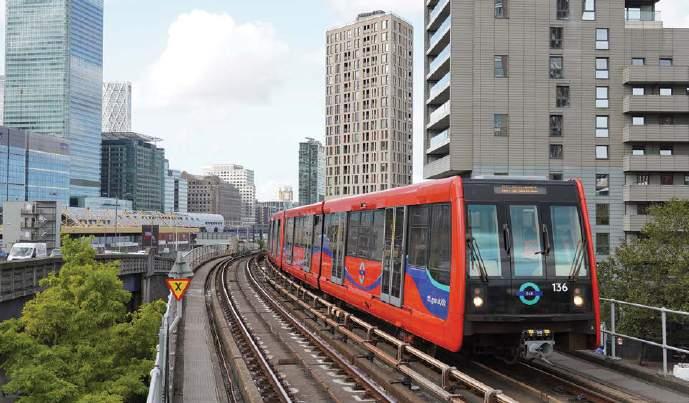
As well the long-awaited arrival of its 54 new trains (more of which later), eyes are focused on franchise renewal. KAD’s original seven-year contract was awarded in December 2014, and its four-year extension expires next April. It can expect serious competition for the new eight-year contract, which has an option to be extended until 2035.
London Mayor Sadiq Khan has set a target of 80% of all journeys in the Capital being on public transport, cycling or walking, by 2040.
New franchise deadlines
There was a 2 October deadline for expressions of interest in the DLR’s highly lucrative business, which is valued at GBP2.3bn (EUR2.6bn), covering a ten-year period with inflation taken into account. TfL proposes to take a shortlist of up to five bidders, and the timetable is that the invitation to tender will be issued in January 2024, and the process will be concluded for the new operator to take over on 1 April 2025.
It is stated that price is not the only award criterion; the bid must embrace all aspects of train and passenger operations and associated assets, together with a number of ancillary requirements. The remuneration is a specific fee, with a package of incentives for increased performance, and also deductions if targets are not achieved.
All applicants must prove that they can achieve these key objectives:
• To continue to drive demand recovery and growth by offering a greater customer experience and promote a positive perception of TfL and the DLR, and support the objective to deliver its green goals and improvements in environmental performance.
• The successful bidder must optimise financial efficiencies through continuous improvement and innovation, with high levels of collaboration with TfL, achieve excellent safety standards, and provide good working conditions for DLR staff.
[Obviously] it must realise the benefits of the 54 new trains.
Keolis has a lot at stake to achieve another DLR franchise win. Operating in 13 countries around the world with 26 tramways and
BeLow: the 2007 and 2009 Bombardier types will remain in service alongside the incoming CaF B23: 136 heads an empty stock movement near Blackwall on 21 september 2023. Neil Pullingnine metros, it has a more than two-thirds foothold in UK light rail, having run Manchester Metrolink since July 2017, and also managing Nottingham Express Transit. Keolis is also in a joint venture with Govia Thameslink Railway, a UK heavy rail operation. Keolis employs 68 000 people globally, and its DLR partner Amey has a core interest engineering consultancy and design, and asset management. It has a 21 000-strong workforce in the UK.
The squadron entry into service of the new train fleet next year will revolutionise the DLR. There will be a quantum leap in quality with the 54 five-car units from Spanish manufacturer CAF, which were ordered back in 2019.
They are part of a larger modernisation programme that is costing close to GBP1bn (EUR 1.2bn), and which includes land acquisition at Beckton for an extension to the main depot, more sidings, a carriage washer and a system-wide power and signalling upgrade.
The first two units have been delivered, and the first ‘ghost’ trains for trial running during overnight engineering possessions and some planned closures, were imminent when this article was written. Richard Graham and Tom Page say that the current schedule for the first train to enter revenue service is next April, and the entire fleet by February 2026.
The fleet total is greater than originally intended; 33 will nominally replace 33 life-expired sets, with an additional ten funded by TfL, and another 11 by the Government’s Department for Levelling Up, Housing and Communities. They will provide extra capacity needed for the level of ridership growth that is expected over the next few years.
The new units belong to CAF’s international Inneo family. The official sales brochure states that their key features include easier access, live passenger Information (LED and LCD displays), air
conditioning, sound (public address and radio) mobile phone charging points, a train attendant Intercom, a ‘black box’ event recorder, CCTV surveillance, derailment detection, automated track monitoring, and obstacle detection.
They are equipped with a signalling system that allows operation in Grade of Automation 3 (GoA3) and driverless operation (with train guard) in fully automatic mode.
Tom Page says: “We will resist the temptation to hold on to the existing fleet. They have given good service for many years, but it is time for them to go.”
He is referring to the Bombardier B90/ B92/B2K series of 94 trains built between 1991-2002, which are rapidly reaching the end of their service life. Three units (39/88/90) from all three batches have been laid aside since 2016, and one car from 88 has been converted into a depot shunter.
Beckton depot, opened in 1994 and now the principal maintenance centre and stabling, is being extended, but there has been a recent hiccup with the principal contractor Buckingham Group going into administration (it was quickly purchased by Kier, saving 180 jobs). The original depot at Poplar remains useful because it is more central and is an important back-up.
The power and communications systems across the network will be upgraded during a series of service suspensions. Recent/ forthcoming closures were/are over the weekends of 2-3 September (Prince Regent – Beckton depot works), 16-17 September (Bank/Tower Gateway – West India Quay/ Poplar), 14-15 October (West Ham –Woolwich Arsenal), 22 October (Poplar –Beckton and Woolwich Arsenal – Stratford – new train testing), and 4-5 November (Canning Town – Stratford).
Ridership growing again
The steady growth in ridership on the DLR since it opened has been due to network expansion, but it really came into its own during the 2012 London Olympic and Paralympic Games that were centred at Stratford (and some other locations).

It doubled ridership during the event fortnight, and the 100m annual figure was reached for the first time. Continued popularity saw a peak reached in 2016-17 with 122.3m tickets reported sold.
Everything seemed to be going swimmingly until the COVID pandemic swept the nation. In common with all UK public transport, and although attempts were made to maintain the timetable, passenger numbers fell.
East London is prospering and contrary to some beliefs, Richard Graham says the new GBP19bn (EUR22bn) cross-London Elizabeth Line to Heathrow Airport opened in May 2022 is “a help not a hindrance”.
Thamesmead prospects
There is talk now about a major extension to the DLR. In late summer, TAUT reported TfL’s ambition to extend from Gallions Reach to Thamesmead via Beckton Riverside to maximise its capability of reaching 30 000 new homes, creating jobs, and providing better connectivity in the east end of London.
There is currently no public money allocated to construction of the project, and a feasibility study has to be paid for by a partnership of private and public sector bodies. The rules are that a Strategic Outline Case has to be submitted to the UK Government for sanction to move to the next stage of development work.
The major engineering feature is a new tunnel under the River Thames, which will cost at least GBP1.2bn (EUR1.4bn). The new line will be linked to a bus transit scheme using dedicated infrastructure from Woolwich to Abbey Wood via Thamesmead, and with good connections to the Elizabeth Line as well as DLR routes. It is hoped to discourage private car use.
The Thamesmead proposal is not new, having been discussed at the end of the last decade. It is hoped to agree an affordable solution by hopefully 2025 to allow construction to begin three years later, with the extension opening in the early 2030s.
Land meanwhile has also been safeguarded for a new station at Thames Wharf in the Royal Docks, halfway between Canning Town and West Silvertown, to serve around 4500 new homes. Funding was withdrawn in 2021 when TfL was instructed to make GBP900m (EUR1050m) savings. Upgrades at Pontoon Dock, Royal Victoria and Canning Town stations are still in favour.
Even before the DLR’s rather low-key inauguration 36 years ago, planning was underway for the first extension to Bank, which opened in 1991. A further five extensions have since been completed, keeping pace with the growth of Docklands as an international business and financial centre, and a popular place to live and visit.
New lines were opened to Beckton (1994), Lewisham (1999), London City Airport (2005), Woolwich Arsenal (2009) and Stratford International (2011).
Several other expansion proposals over the years have seen mixed outcomes.
Full integration with the London Underground and heavy rail was once a popular concept, but no longer. In the
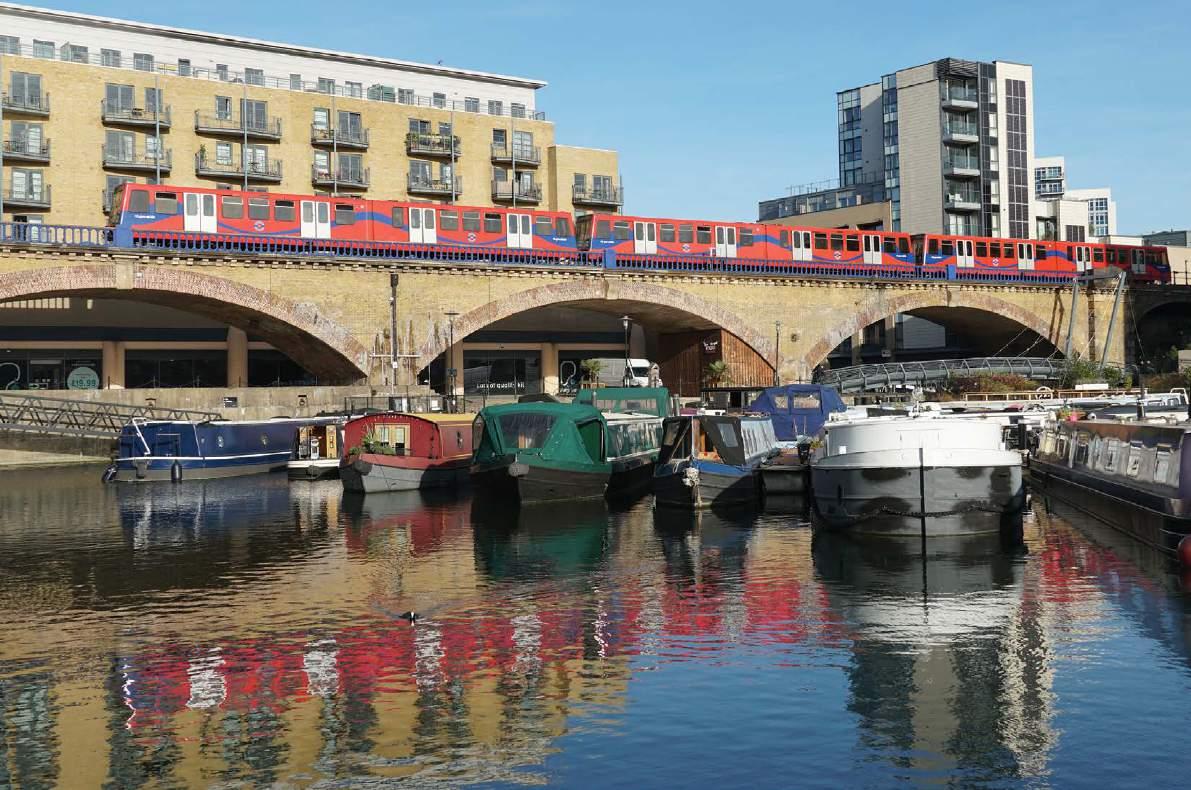
Si Nce 1987: DLR ha S bee N L ow co St, L ow R i S k, high Pe R foR ma Nce
t he Docklands Light Railway has certainly come a long way since it was proposed in the mid-1970s as a low-cost solution to revitalising the struggling eastern area of the U k capital. t he area lost its traditional docks business because it was not able to handle large container ships that go to nearby t ilbury and other ports such as felixstowe and Southampton.
e xpansion of the London Underground was discounted because construction was clearly unaffordable, and it also would have required significant extra investment to create extra capacity for the additional central city passengers that would be joining it at key points.
Light rail was the answer, and plans were finalised in 1982 for a straightforward route from m ile e nd (later changed to Stratford for a quality interchange with heavy rail) to the i sle of Dogs and the c ity of London. it would have 15 stations.
much of the original alignment was old heavy railway, either closed or underused, and it was revived with simply constructed and mostly unstaffed modular stations, either elevated or at street level, and the first 12km (7.5-mile) section was ready to open on 31 august 1987. it began with just 11 two-car bi-directional driverless units running on the standard gauge track. t he power system chosen was bottom contact 750v D c power offering a regular train speed of 64km/h(40mph), with 80km/h (50mph) possible if required.
it was an instant success, but only carried 6.7m passengers in its first year.
t he last 35 years have seen the system expanded to 38km (24 miles) with a total of 45 stations. t here are now six distinct routes, radiating to Lewisham, Stratford i nternational, b eckton, woolwich a rsenal, and into central London, splitting for b ank and tower gateway. t here are numerous interchanges with the national network and the Underground, and capacity has been greatly increased by the upgrading of platforms and introduction of three-car trains on some lines, and stepping up service frequencies.


LeFt: work is underway on the north Quay site which is near the Canary wharf elizabeth Line station and next to west india Quay dLR; the lower track by-passes the station. Neil Pulling
LeFt: Using a new thames tunnel south of a rebuilt island Gardens station, the Lewisham route has been a great success. a train led by B90 24 approaches Lewisham terminus, which is sited below the elevated main line platforms, on 9 June 2022.
Neil Pulling
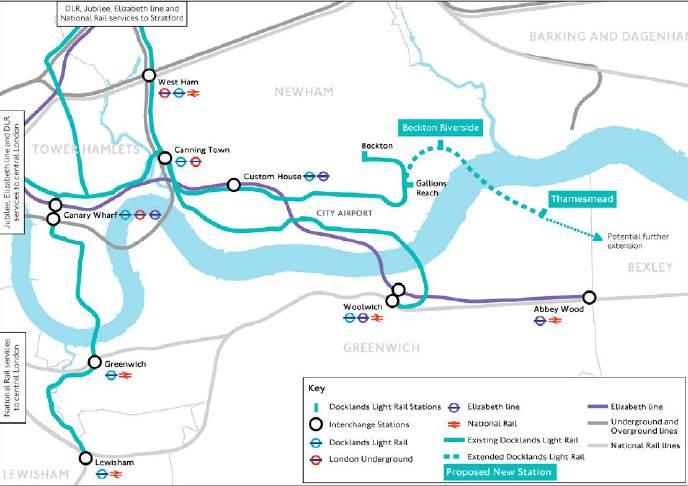
BeLow LeFt: the proposed thamesmead extension will see the dLR cross the thames and head south-east towards Bexley. DLR
BeLow: Between Canary wharf and heron Quay stations in the core of the docklands business district. an entrance to tfL Underground’s Jubilee Line, opened in 1999, is to the right.
centre of the capital, Charing Cross was seen as a logical extension from Bank until the high cost of tunnelling was assessed, as well as safety issues that do not apply to the current DLR, whose trains largely run above surface. Bank station is, however, much more passenger friendly following its recent GBP655m (EUR772m) reconstruction to create more capacity.
An even higher pie in the sky has been to extend DLR to Euston via Holborn (to connect with the West Coast Main Line and High Speed 2) and St Pancras International. It was realised that it would be much cheaper just to increase the efficiency of the Circle and Northern lines of the Underground instead of creating an additional non-standard route.
A line from Gallions Reach to Dagenham Dock was proposed in 2003, but dropped on cost grounds in favour of taking the heavy rail London Overground further to a new station at Barking Riverside, which opened for business last year.
While the DLR route to Lewisham has been an outstanding success, a link to the heavy rail Catford and Catford Bridge stations is possible in the medium term, going further south to link up with London (Croydon) Tram at Beckenham Junction. The high construction cost is seen as a barrier, and Lewisham station is awkwardly sited.

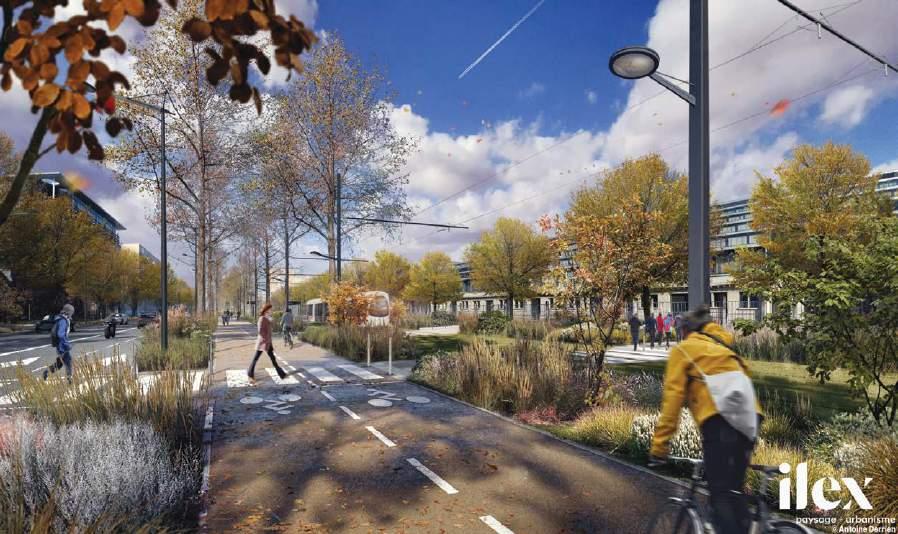
is helping lead the way in combating the new challenges facing tramway designers caused by worldwide heatwaves.
The extreme temperatures experienced during summer 2023 have led to the phrase ‘global warming’ being replaced by ‘global boiling’. Nowhere has the impact of these extreme temperatures been felt more than in France’s second city of Lyon.
Temperatures reached a record high of 37.5 deg C on 11 July and rarely dipped below 30 deg C between 8-31 July. In fact, the city has described itself as struggling or battling to remain habitable in the summer months.
Lyon has long recognised the environmental benefits that electrically powered light rail can bring. It has also recognised that tramways do emit carbon and has employed engineering and consultancy firm SYSTRA to make its new T10 line as environmentally friendly as possible.
Mike Muldoon, SYSTRA’s Business Development Director (UK & Ireland) explains more.
“Tram systems do emit carbon and the time they do it is in construction.
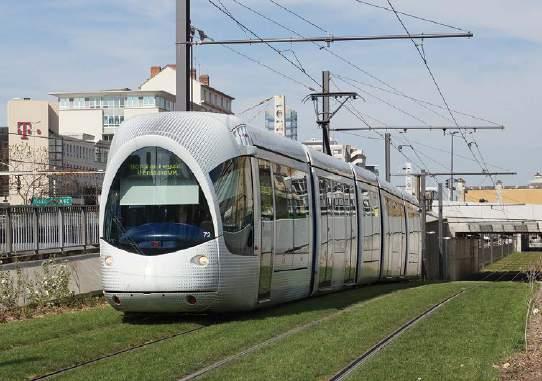
We contribute a lowest carbon path with a tramway project, thanks to the modal shift and the embodied carbon with the optimisation of the design and construction phase.”
T10 has become the first tram route designed using the company’s own Sustainable Design & Construction Framework. Muldoon says that SYSTRA will advocate its on all future projects that it’s involved in because it’s the “responsible designer’s role to bring these kinds of practices, analysis and thought to the project as we do the glamorous stuff like designing the route”.
a
the
there is only a concrete
for support under t10’s grass route, which requires less concrete and also means water can drain from the route more easily. on this more traditionallyformed grass trackbed, lyon
The framework, supported by SYSTRA’s CarbonTracker tool, effectively breaks down every aspect of a project into systems and sub-systems, allowing designers and engineers to attribute the most appropriate eco designs to each sub-system.
This is most clearly illustrated in the design of the trackbed. CarbonTracker allowed it to compare the different kinds of platform in a whole life cycle approach. In the end, the right balance between carbon emissions avoided and economical cost for the whole life cycle identified the grass track platform as the most relevant solution for this project.
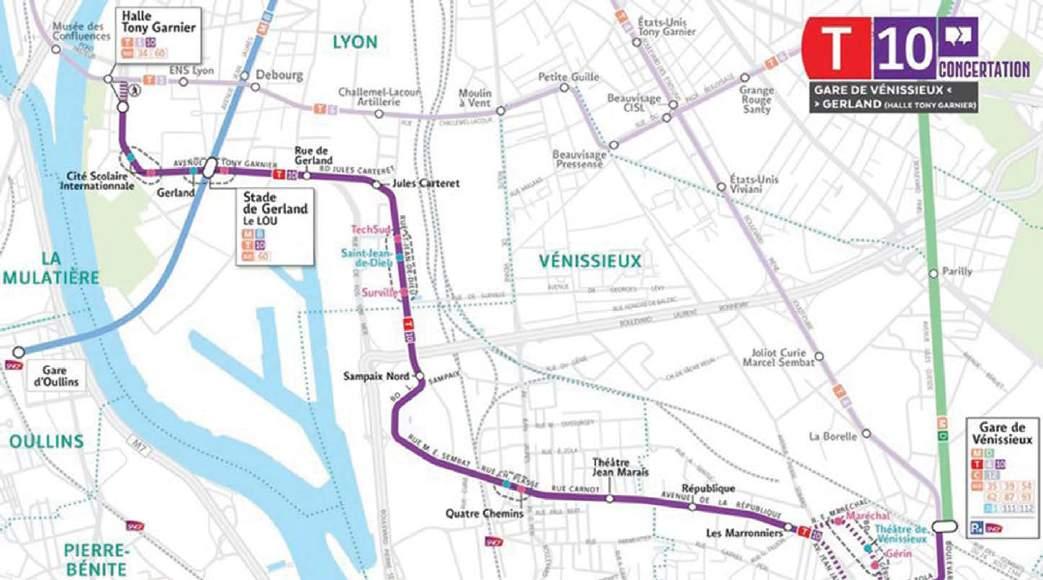
aboVe: construction has already started along the route of the new t10, which links existing lines t1 and t4 (see p.382 TAUT 1030 for a full feature and system map of lyon). Systra
Some grassed tram routes still use a concrete bed under the grass. There’s nothing under T10’s grass except for a concrete ladder to give support. It requires less concrete –an instant carbon saving – but also allows water to drain more easily, another important factor in a city which suffers from very heavy storms.
Muldoon says: “It does highlight how far the challenge takes us still to achieve lowest carbon construction, and we need to look at how that concrete is formed. Fundamentally however, it drives down the overall [carbon] footprint of the whole system by 3.5%. Over its life, that’s quite a contribution.”
Another initiative that SYSTRA has implemented is not importing and exporting construction materials over significant distances. “It’s about re-using what you have locally and saving excavation materials for re-use later,” Muldoon says. “It’s a re-use, recycle approach.”
Tree planting has, naturally, featured heavily in the design but not only to replace what might have been lost during construction. Strategically placed trees will create biodiversity and shade, what Muldoon describes as ‘islands of freshness’.
“You create shade, spaces along the road, to help people cope with those temperatures”, he says. “There is nothing worse than an allconcrete environment for reflecting heat and if you’re walking down that street, you’ll be very glad of that opportunity for shade and the option to jump on a passing tram.”
SYSTRA has gone into the same level of detail regarding the development of T10’s new depot, which will also house trams from other lines.


Says Muldoon: “In the construction of the depot, we’re looking at how those materials are formed, how they’re created, how they’re insulated to protect the system’s credentials to make sure that everything is harmoniously developed, there’s no red herrings in there, no anomalies in the design process where all the effort has gone in one area, and we’ve blown it somewhere else. It’s a holistic approach.
Muldoon concludes: “This has been the start of the eco design process. I think a
number of us have been conscious of these issues before, but what we’ve done is pool them all together and to look at how we can deploy them. It’s a process of continual improvement and learning.
“An average person in France emits about 10t of carbon dioxide a year. What we’re trying to do here is reduce that by giving them a means of low carbon transport. Our bit is to try to give them that system without creating so much carbon that the benefit that this system brings is lost.”
The car is king in Italy, but Paolo Marchetti suggests that the time could be ripe for Italians to start embracing tramways too.
Ferrari, Maserati, Alfa Romeo... Italy is home to some of the most emotive and evocative names in the automotive world. It’s probably fair to say that Italians love their cars, but there are signs that the country is beginning to embrace the tram, too.
The relationship between light rail and the car follows a similar pattern to other European countries. Italy once boasted an extensive tram network of largely 19th Century origin, but this declined as private car ownership grew in the wake of World War Two. Key cities – Roma (Rome), Torino (Turin), Napoli (Naples) and Milano (Milan) –still retain their tram networks, although much reduced.
Only two cities have second generation tramways. Florence’s opened in 2010 and its 16.5km (10.3-mile) network encompasses
two lines. Palermo’s 23.3km (14.5-mile) system opened in 2015.
Paolo Marchetti, Technical Director for Systra’s Italian subsidiary, believes that new tramway development in Italy has been limited because of the country’s love for the car. He looks to France where elections can be won on the promise of new light rail schemes.
“I believe and am convinced that, at a political level, the tramway is much, much more complicated [to get approved] than a metro because of the space you take away from cars,” he says. “It is so politically sensitive, especially in Italy which has a very deep car-based culture.”
Promoting new tramways, he says, can lead to “political disaster.”
Things are about to change.
“Italy is a country which is lagging behind in terms of tramway infrastructure,” Marchetti says. “Besides Palermo and Florence, investment has been a bit random with no clear strategy at national level.
“Of [Italy’s] 25 average-sized cities, which are fit for a tramway network, only eight of them have one and these are not even the most important [cities].
Compare that with France, which has been the model of the renaissance of the tramway in Continental Europe. Out of 15 cities of
comparable size, 13 have a tramway network.
“The good news is that we’re trying to catch up.”
The Italian government is investing in 186km (115 miles) of new tram lines. This includes extending legacy tram systems as well as building new ones in currently tram-less towns and cities.
Of all of Italy’s new tramway projects, Marchetti describes Bologna’s as the most significant. That’s not just down to the amount of money that’s being invested –EUR500m (GBP429m) – but where it’s being spent. Bologna’s new tramway is more than just a tramway; it will completely transform the city.
This northern Italian city is home to some 400 000 people. It’s famed for its cuisine as well as its history. It’s home to the world’s oldest university, while UNESCO recognised the 38km (24 miles) of porticoes – distinctive covered walkways – as a world heritage site.
The city once had a 1445mm gauge tram network. It opened in 1880 and the last trams ran on 3 November 1963. Since then, as with most Italian cities, the car has been king. Waterways have been covered over to provide
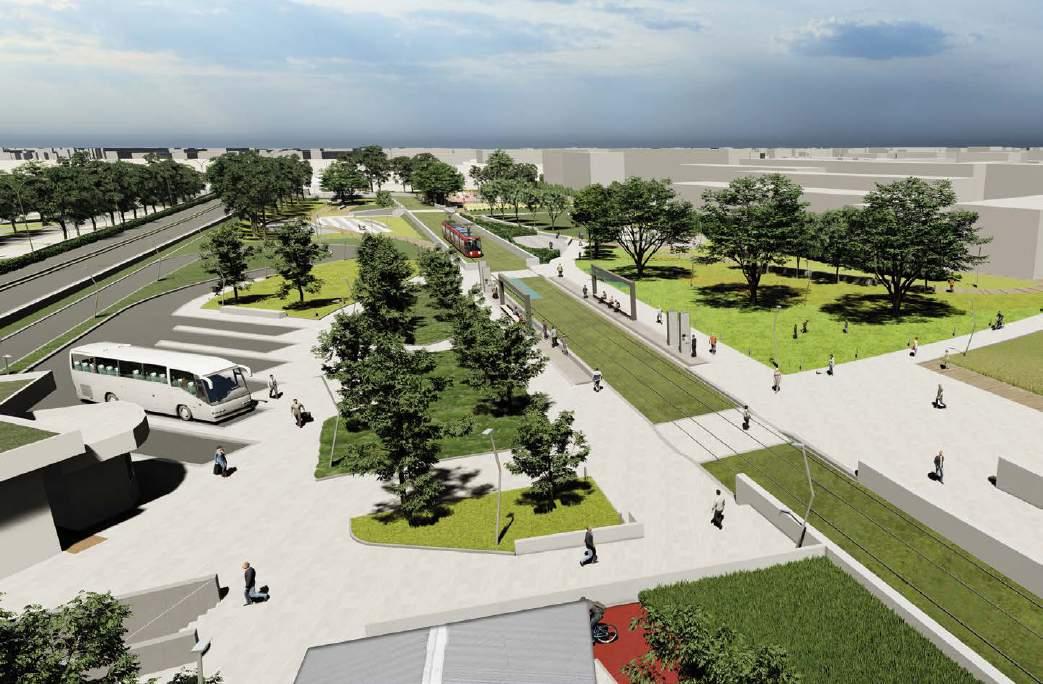

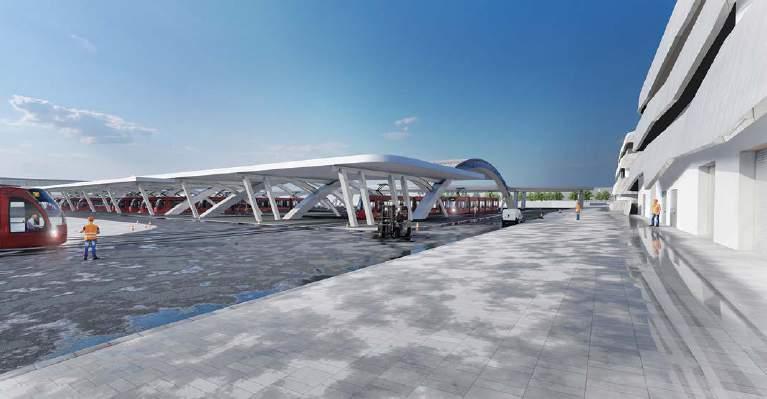
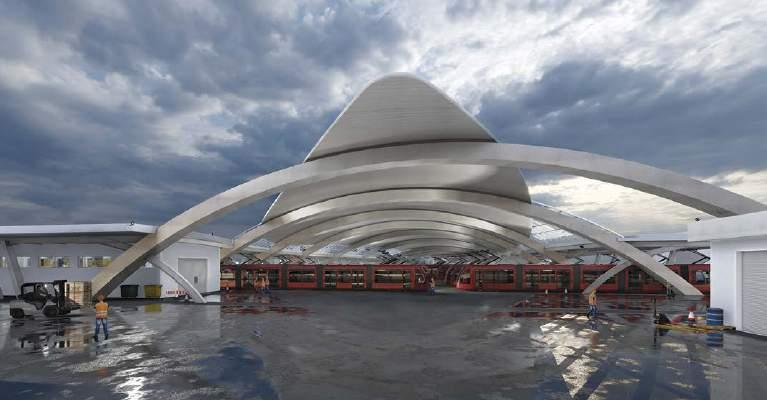
more road space, streets are lined with parked cars, and even some historic buildings are mere islands in a sea of automobiles.
You could be forgiven, therefore, for thinking that public transport in Bologna is practically non-existent. This is not the case. It actually has a very efficient bus and trolleybus network, running with a headway of two minutes on all main routes.
“There is no more capacity on the existing network,” Marchetti says, “so the natural choice is new infrastructure.”
Marchetti says that Bologna has been trying to make a big investment on infrastructure for more than 20 years.
“They’ve tried with the bus service, then with a metro and then with a light metro and now with the tramway,” he says. However, the publication of a sustainable urban mobility plan established the goal of reducing car trips on a daily basis by 37% by the close of 2030. This implies, obviously, that a huge modal shift is required.
The result is a network of four new tram lines. The east-west Red Line runs from Borgo Panigale – Facoltà di Agraria/ CAAB [the agri-food centre of Bologna]; the north-east Green Line (Due Madonne –Corticella); the Blue Line from Casalecchio to San Lazzaro and, finally, the Yellow Line from Casteldebole to Rastignano.
It’s one thing for a city to decide to build a tramway. Getting to the point where spades are in the ground can seem to take an inordinate amount of time. Bologna is different.
Approval for the Red Line came in December 2017.
“The feasibility study and the design needed to get the funding was submitted at the end of 2018,” Marchetti says, “and funding was granted at the end of 2019.”
The final design was authorised in April 2021, the tendering process ran between August 2021-May 2022, and works started in April this year.
“The speed and the success of the tram line has been so significant that the municipality has decided to invest and submit further funding for the Green Line,” says Marchetti. “[Progress on] the Green Line is running pretty fast. We will finish the design at the end of this year. We believe that the Green Line will be open to public service the year after the Red Line.”
The Red Line should open in December 2026, with the Green Line in 2027. The Blue Line is still at the feasibility study/early design stage, while the Yellow Line is a longer-term aspiration.
Going from nothing to a whole network suggests a huge change in mindset. But what is behind that change? Is it purely environmental? Marchetti believes that while de-carbonisation and fighting climate change has played a big part in that decision, image and identity are important too.
“I think each city has an identity to define and establish,” he says, “and I think Bologna sees the tramway [as a way] to enhance its identity and potential growth. Transport infrastructure is very significant and Bologna has made the choice to identify itself with this.”

What will the Red Line look like? It will be 16.5km (10.3 miles) long and 1435mm gauge. Line speed will be 18km/h (11mph). Ridership is expected to be over 100 000 passengers per day.
Says Marchetti: “The centre part of the city, which is the most delicate and sensitive from an historical point of view, will be crossed with a catenary-free system using batteries.”
The catenary-free section is approximately 2km (1.2 miles). Catenary will be used along the rest of the line, but the poles will be integrated with the street lighting.
Trams will form the backbone of the city’s public transport network. The 650 buses that run along the route of the Red Line will be reduced to just 35.
“Even though they’re part of the public transport [network],” Marchetti says, “the pollution and the noise and the quality of the [bus] service is not comparable to an urban tramway.”
The bus is not the only mode of transport being considered for removal from the city centre. The city is also going after the car… and this will have a knock-on effect as to how the Bologna of the future will look.
Its streets, typical of a city with mediaeval origins, are narrow. Yet the Red Line will have its own segregated trackbed.
“The municipality said that we had to restrict roadway capacity [in order to] emphasise the transport capacity of light rail,” Marchetti says.
“Parking space has been a big issue. We had to vow to create or to try to balance the number of parking spaces [that are going to be] eliminated. As a general rule, we couldn’t compensate completely but we found ways to turn the compensation for parking spaces
 aBoVe: Via dell’Indipendenza is one of the many streets with the famed porticoes [arcades], which is currently “just a place for cars”. Making it fully pedestrian would get people out of the arcades.
BeloW: although a short section will run catenaryfree through the heart of the city, elsewhere, such as here at Via Matteotti, the tramway will run on a catenary system integrated into street lighting.
aBoVe: Via dell’Indipendenza is one of the many streets with the famed porticoes [arcades], which is currently “just a place for cars”. Making it fully pedestrian would get people out of the arcades.
BeloW: although a short section will run catenaryfree through the heart of the city, elsewhere, such as here at Via Matteotti, the tramway will run on a catenary system integrated into street lighting.


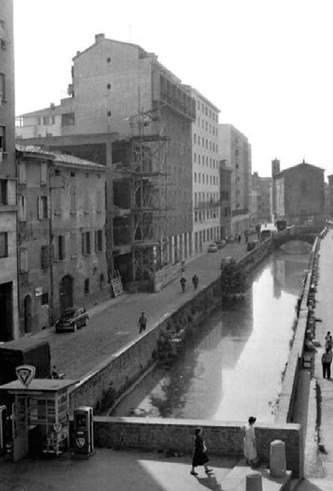
into park-and-ride spaces. And that’s been done for every section of the alignment.
“The population in the municipality has to accept the fact the general reduction [of the roadway] was the ultimate goal.”
This, Marchetti says, has enabled a true façade-to-façade approach to placemaking to take place.
“The whole width of the road is being modified in order to make light rail as effective as possible,” he says. It’s not just parking spaces that will be affected but the circulation of remaining road traffic too, as well as the introduction of green and environmental elements, such as trees.
“There are 12 significant side projects regarding placemaking,” Marchetti says, “and a number of innovations have been integrated into the main light rail project.
“We’re talking about roughly 30% of the investment dedicated to such projects which comprise parking lots/park and ride, intermodal hubs and interchange stations; new parks and green areas; making the main street in the centre of town completely pedestrianised.”
One benefit to being late to the tram party is that Italy can look to other countries for ideas. Seeing what has been built in the late 1990s and early 2000s has given Bologna the opportunity to “to think, to elaborate, to assess what has been done in other places in Europe”.
Marchetti cites both Amsterdam and Manchester as good examples to follow as well as Florence. Marchetti describes the latter as an “example of placemaking and urban renovation”, describing how changing the roadway, kerbs, pavements and other the urban furniture is “a must in such architectural sensitive cities”.
France has been a particular source of inspiration although not, Marchetti jokes, because Systra is a French company.
“France has been the leading country in the renaissance of the tramway in Europe,” he says, citing the strip of land in Bordeaux that separates the Place de la Bourse from the river Garonne. Once a vast car park, it’s
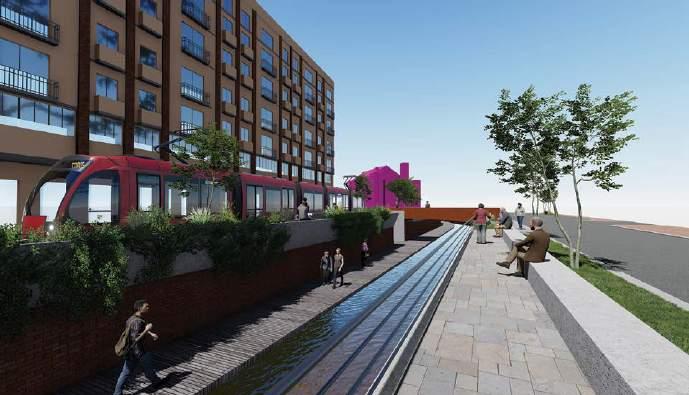
“The whole width of the road is being modified in order to make light rail as effective as possible. It’s not just parking, but traffic and environmental elements too.”
now a pleasant, outdoor space with gardens and a water mirror.
“The smaller French cities have done a great job of introducing trams and renovating the urban environment,” he adds.
Israel also provided another source of inspiration. Marchetti points to how the new tram line has turned Jerusalem’s Jaffa Street from “the most chaotic and crowded and polluted street in the city” to a pedestrianised area booming with commercial enterprises.
“How do we go about implementing [that] in Bologna?” he asks.
Porta San Felice is the westernmost gate of Bologna’s mediaeval walls. Its origins go back to the 13th Century. The surrounding walls were removed in the 1840s but it’s now lost in a sea of traffic.
Says Marchetti, “Porta San Felice is a good example of placemaking. It’s now just a roundabout. It’s not accessible and only visible from cars.
“We’re taking advantage of the fact that the tram tracks go around it and encircle it to make a new green area and a new pedestrian area and making it accessible by cycle paths.”
To the east of Porta San Felice is Via Riva di Reno. Post-war, multi-storey dwellings flank an elongated square with the road passing down each side and carparking in the middle. But under the parked cars is a hidden reminder of Bologna’s past.
“This is another interesting example of taking advantage of [new] infrastructure to refine renovation and placemaking,” says Marchetti. “The street is quite narrow so we’ve had to split the tracks and encircle the whole neighbourhood.
“The idea of the municipality was to take the opportunity of the new track and
uncover what was an old canal. It was built as a diversion of the river Reno, which rounds around Bologna, and was forgotten over time.
“We have the opportunity to make this space accessible, pedestrianise it and then, by uncovering the canal, make a new urban space which is really high quality.”
Via dell’Indipendenza is one of the many streets with the famed porticoes (which Marchetti refers to as ‘arcades’). Currently, he says, it’s “just a place for cars”.
“Therefore, the idea was to make it fully pedestrian... to give people the opportunity to get out of the arcades”, he says.
Meanwhile, the tram stop at Piazza XX Settembre required careful attention given its proximity to the railway station.
Marchetti says, “The passenger flow will be significant and we have to make space for that [while] keeping the concept of urban renovation.”
The eastern terminus at Fiera Michelino will transform what is currently another vast network of roads and roundabouts (anyone familiar with the UK’s National Exhibition Centre near Birmingham will have an idea of what it looks like), while the western terminus will be built on agricultural land as space is required for the depot.
Both termini will have park-and-ride spaces and will act as multi-modal hubs. They will have plenty of green spaces too, while the depot and interchange buildings at the western terminal are to be bold and dramatic. This couldn’t be more different to the historic buildings within Bologna’s old mediaeval walls. But the choice is deliberate:
“The quality of the new buildings,” says Marchetti, “[are] landmarks which create affection for the new project. [They] will make the citizens proud of their new transport infrastructure.”
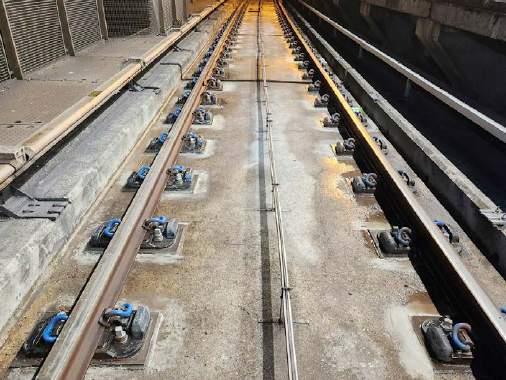
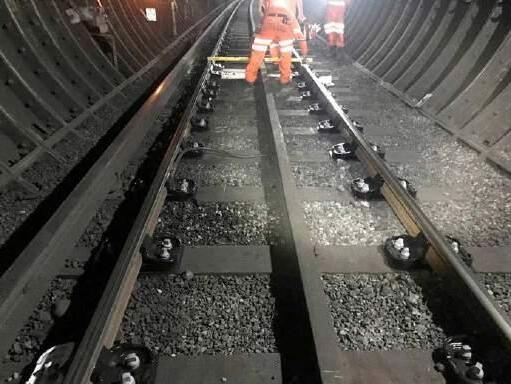




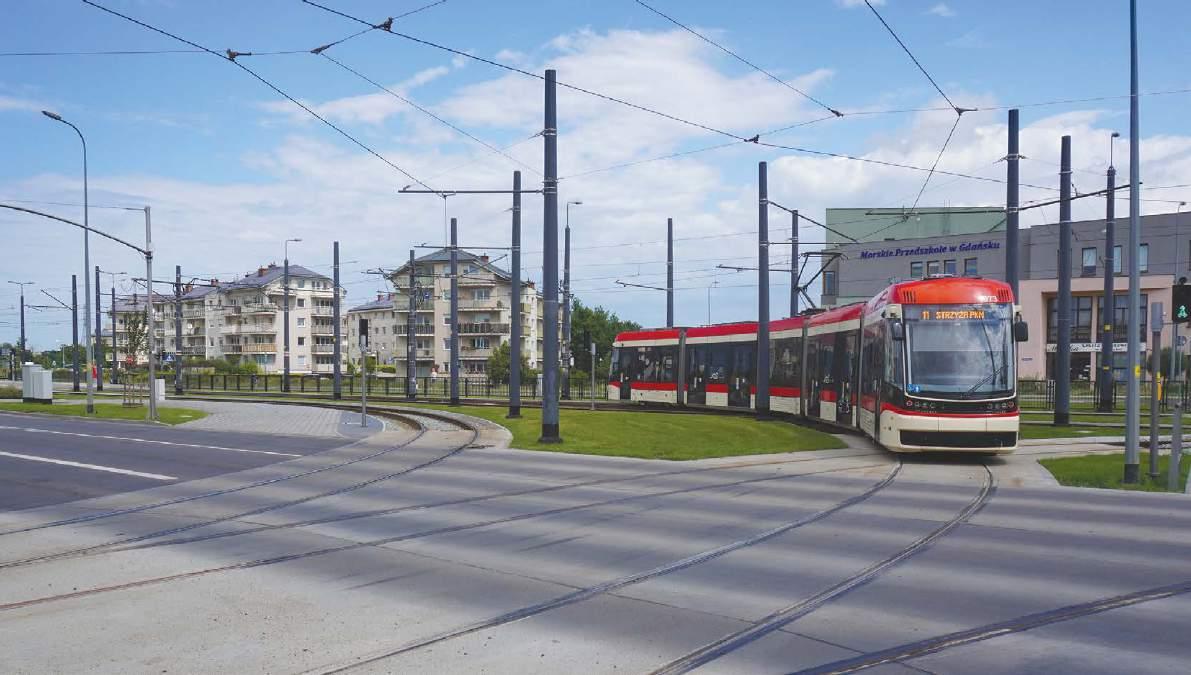
Poland’s Baltic coastal city fleet has recently gone fully low-floor; andrew thompson provides an update.
Gdańsk, the most important port city on Poland’s Baltic coastline, has completed the conversion of its expanding tramway to full low-floor operation. It serves a region that suffers from its workplaces often being a considerable distance from the scattered housing developments.
The arrival of the two latest batches of Pesa Swing (30 more vehicles), has made it possible for operator ZTM (Zarzad Transportu Miejskiego w Gdansku) to withdraw the last of the older, high-floor Konstal type 105, 46 years after the arrival of the first such bogie cars. The gauge is 1435mm, and the power supply 600v DC. Annual ridership is well over 150 million.
Since the withdrawal of the last 105, ZTM has been able to operate all of its tram services with accessible vehicles, both a milestone for the city and (at the time) giving it unique status among all Polish tram operators.
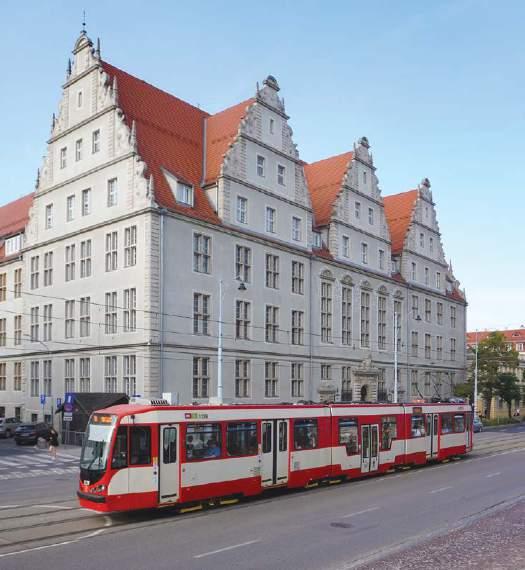
All images Andrew Thompson, 13 July 2023.
aBoVe: running north on line 11, Pesa Jazz 1073 uses the new curve track at Przemyska. since the opening of the 1.7km (one-mile) orbital link between Przemyska and ujeścisko at the southern end of the network in march 2023, Przemyska has become an important junction with a triangle. the curve to the right leads to Łostowice Świętokrzyska but is only used for operational purposes.
Left: running from the city centre westbound on line 10 towards the terminus at Brętowo Pkm, a bidirectional duewag N8C passes the historic district Court building, which dates from 1910.

The principal current light rail project in Gda ń sk is the planned link between the network’s western edge near the Warne ń ska junction and the important transport interchange at the Gda ń sk Wrzeszcz main line station by way of Nowa Politechniczna.
This connection will create a significant shortcut and also serve as a western orbital route, giving all sorts of options for establishing new routes and accelerating tram travel between the west and north of the city. It would also take trams directly to Gda ń sk Wrzeszcz station, which in addition to local stopping trains is also served by PKP Intercity long-distance services. Trams currently stop about 250m shy of Wrzeszcz at Klonowa.
This ambitious scheme is currently still at the planning stage, but that process is expected to be completed by late 2024. A timetable for construction works has not yet been set, although it is the city’s main tram priority for the mid-term future.
The local light rail system has its origins in the German era and was first established as
a horse tramway in 1873, and electrification took place from 1896. Of the two active depots, the archaic red brick facility at Nowy Port dates from 1899 and the elegant Art Deco building at Wrzeszcz from 1935. Given their heritage value and attractive architecture, both sites are listed as monuments.
Historically, the tram system has been laid out to follow the coast with long trunk lines that run north to south, yet as urban sprawl and large residential developments have reached into the hills southwest of the historic centre, so has the public transport network.
Indeed, four separate extensions have been built since 2012 at the south western end of the system, totalling 11.8km (7.3 miles) and taking the whole network to its current size of 60km (37 miles). Since the most recent TAUT Systems Factfile on Gda ń sk in January 2019, the two newest network additions are the 3.2km (two-mile) long extension from Migowo to Lawendowe Wzgórze in the western hills in June 2020 and the 1.7km (1.1-mile) long Ujescisko – Przemyska link in March 2023.




Subisława
Oliwa Obrońkow Westerplatte Derdowskiego Tetmajera
Bażyńskiego
Uniwersytet
Gdański
Piastowska
Czerwony Dwór
Bora-Komorowskiego
Kołobrzeska
Zaspa
Startowa
Źwirki Wigury
Strzyża PKM Zajezdnia
Zamenhofa Wojska Polskiego
Dworska
al. Płażyńskiego
Wczasy Mazurska Brzeżno Dom Zdrojowy
Sternicza
Uczniowska Gdańska
Grudziądzka
Jana Pawła
Legionów Bajana
Gdansk Wrzeszcz
Galeria Bałtycka
Klonowa
Jaśkowa Dolina Miszewskiego
1
Reja
Politechnika
Brętowo PKM
Kolumba
Warneńska
Budapesztańska
Migowo Królewskie Wzgórze
Łabędzia
Stolema
Zabornia
Ujeścisko
Located on the Baltic coast on the southwestern end of the namesake bay, the port city of Gdańsk (Danzig) is steeped in history and remains one of Poland’s most important maritime centres.
As a member of the influential Hanseatic League from the 13th to the 15th Centuries, the city state built its wealth on trade. It managed to maintain much of its independence, while at different times coming under the political influence of both Sweden and Poland.
Following Poland’s re-establishment as an independent republic in 1918, the stipulations of the Versailles Treaty sought to prevent a territorial dispute with Germany, and Gdańsk went it alone once again in 1920, becaming known as the Free City of Danzig.
Rail transport has always been crucial in keeping this small state together. It was extended to 1892km 2 (731 square miles), and reached beyond the immediate city limits to also include the seaside resort of Sopot (Zoppot) and the important railway junction of Tczew (Dirschau).
While Poland enjoyed privileged use of the port facilities of the Free City, the new republic also gained access to the sea at Gdynia, creating the so-called Polish Corridor. Even today, Gdynia remains Poland’s largest port and boasts the country’s largest trolleybus network.
The Free City of Danzig existed until the outbreak of World War Two, when Germany occupied it on the first day of the conflict. Gdańsk later became a permanent part of Poland. Since then the three cities of Gdańsk, Sopot and Gdynia have been seen as one metropolitan area and known as ‘Trójmiasto’ (Tricity).
The population of Trojmiasto is currently around 750 000, with the lion’s share of 471 000 within Gdańsk city limits. The wider seaside region of Pomorskie (Pomerania) has a population of well over 1.1 million.
Kasztanowa
Krasickiego Latarnia Morska
Na Zaspę
Marynarki Polskej
Rybołowców Przychodnia Nowy Port (Oliwska) Nowy Port Góreckiego
Władysława
Nowy Port Zajezdnia
Plac
Wolności
Kolonia Uroda
Śnieżna
Belgradzka
Piekarnicza
Kościuszki 3
Mostostal
Mickiewicza
Polsat Plus
Arena Gdańsk
Zaglowa AmberExpo
Swojska
Węzeł Klinicza 2
Twarda
Stocznia Północha
Opera Bałtycka
Traugutta
Uniwersytat Medyczny Chodowiekiego
Brama Oliwska
Dworzec PKS
Zakopiańska
Skrajna Siedlce
Stocznia SKM
Plac Solidarności
Nowe Ogrody Dworzec Główny Hucisko Brama Wyżynna
Okopowa
Chałubinskiego Odrzańska Pohulanka
Wilanowska Ceberowicza Cieszyńsiego Chełm Witosa Sikorskiego
Piotrkowska Łódzka
Częstochowska
Lawendowe Wzgórze
Przemyska
Płocka Łostowice Świętokryska
Ugory eMOCja
Sucharskiego Kaczeńce
Przeróbka Lenartowicza
Głębowa
Zabi Kruk Chmielna Akademia Muzyczna
Brama Zuławska
2 0 1
Kilometres

Rozłogi
Zimna Stogi
Stogi Plaża
NUMBERED STOPS
1. Plac Komorowskiego
2. Wyspiańskiego
3. Politechnika SKM
4. Powstańców Warszawskich
5. Urząd Miejski
6. Węseł Groddecka
7. Sródmieście SKM
Proposed extension/route
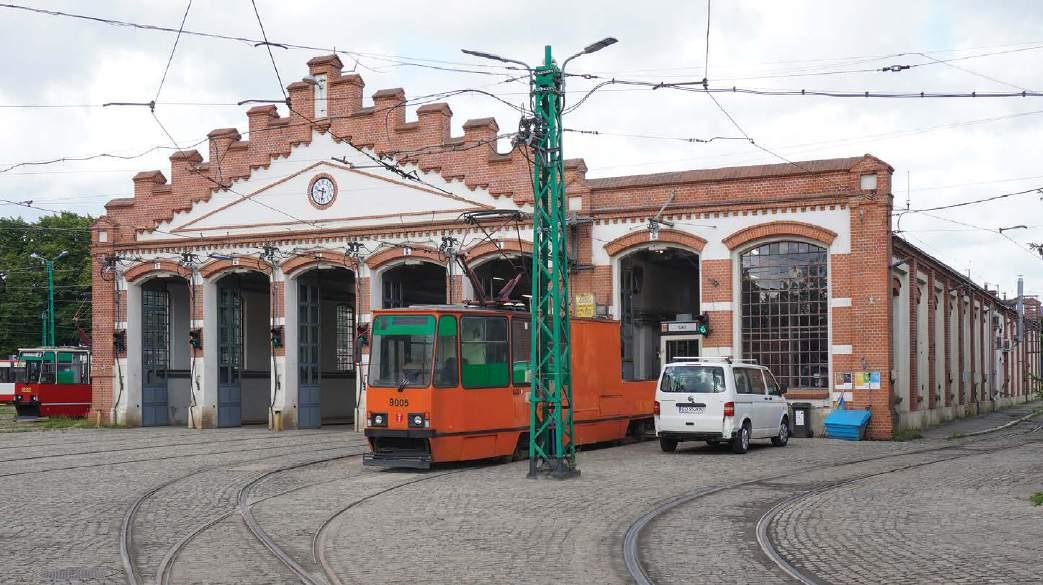
rIGht: opened in late June 2020, the new terminus at Lawendowe wzgórze does not feature a turning loop and so can only be used by double-ended vehicles. the modernised duewag units 1123 and 1119 showcase the older (left) and newer

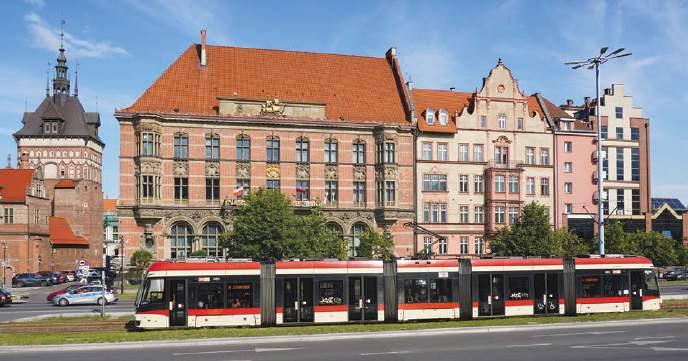
Combined with the earlier 2.9km (1.8mile) branch from Sikorskiego to Łostowice Świętokrzyska in May 2012 and the 4km (2.5-mile) extension in August 2015 from the previous western terminus Siedlce to Migowo (with a spur to the main line interchange Brętowo), the latest two additions have in essence created a large southwestern loop and made a full circle. Just like the end of the line at Brętowo, the new terminus at Lawendowe Wzgórze is not fitted with a turning loop. This is no problem though for the flexible fleet of municipal operator ZTM, as there are now 35 double-ended Pesa Jazz
While the first five Jazz were delivered in 2014-15, the operator made use of contractual options and received a second batch of 15 between June 2019 and July 2020. Then followed another 15 between October 2020 and February 2021. These fully low-floor, air-conditioned EMUs are designed for maximum transport capacity and over their length of 30m (100ft) can accommodate 207 passengers, although there is remarkably only enough seating space for 28!
The other bidirectional stalwarts are the 62 Duewag N8C-NF, originally built between 1978-86 and then extensively modernised. They were retrofitted with low-floor centre sections by Modertrans in Pozna ń, after being acquired secondhand from different operators in Dortmund and Kassel, Germany.
The modernised N8C-NF have been introduced in Gda ń sk in three separate phases in 2009, 2015 and 2017 respectively. The single-ended backbone of the fleet remains the Pesa Swing (35 vehicles), launched in 2010-11. These are supplemented by smaller series of three low-floor Bombardier Flexity type NGT6 from 2007, four Alstom Citadis type NGd99 from 1999-2000, and the operator’s first low-floor cars, the two 1997 Konstal 114Na, which were modernised after 20 years in service in 2017.
One of two active tramways in Slovakia, Košice’s system is characterised by expansion during the second half of the 20th Century and more recent modernisation.
Words and pictures by
Neil Pulling
Košice is the second city of Slovakia with around 240 000 residents, and is sited 315km (196 miles) north-east of the capital, Bratislava. The foundation of Košice is partly attributed to Germanic settlers, it gaining town status by 1290 and being part of the Kingdom of Hungary until just after World War One.
As the region’s dominant community, also just 18km (11 miles) from the Hungarian border and 50km (31 miles) from Ukraine, Košice is an important transport hub. Main roads and railways converge here and it has a small but well-served international airport. Central Košice occupies a level site, although the suburbs spread into surrounding hills (which include tram coverage).
Trams are part of a network run by municipally-owned Dopravný podnik mesta Košice (DPMK), which
ABOVE: Vario LF2+ 832 heads south from the junction at Nám. osloboditeľov on 24 May. Behind the tram, parked cars and St. Elisabeth’s Cathedral mark the abandoned Hlavná route through Košice’s historic centre.
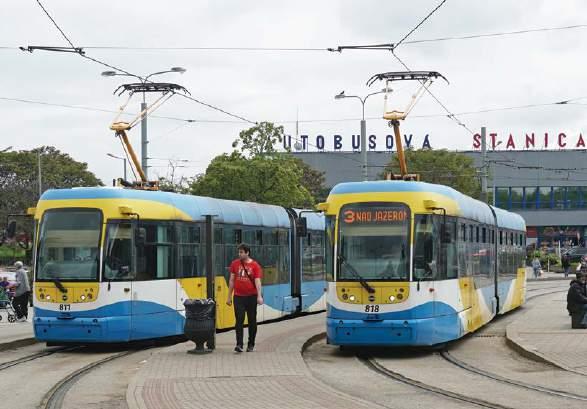
The most numerous model is the Vario LF2+ built 2014-2017, with batches numbered 801-833 and 834-846. Except for a prototype in o strava, Košice is the Czech type’s only operator. With Škoda electrical equipment, the tram is a product of a lianciou TW Team (badged as TW Team), an alliance of Pragoimex, Kos Krnov and v K v Praha. Vario LF2+ is a uni-directional tram with two
sections, 22.6 metres long and 2.48 metres wide. l evel-entry doors give access to two low-level areas which approximate to 43% of the total; end doors are stepped. Capacity is 44 seats, 131 standing. a type better represented on Czech systems, tram 701 is the fleet’s only single car 15.1-metre Vario LF. a lso in regular service and the system’s most capacious trams are bi-directional ČKD
Most were originally built in 1990; surviving examples of both types are numbered between 509 and 538. They have three sections, with space for (in original form) 283 standing, 54 seated. DPMK also identifies the availability of single car Tatra

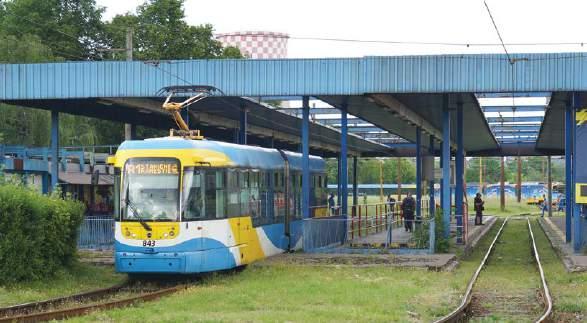

identifies the mode in service listings as električkové linky.
After use of horse and steam power from 1891, electric trams introduced for freight in late 1913 were soon followed by passenger services. Beyond the early expansion, for some time continuing to be influenced by freight opportunities, a high proportion of today’s system was created to serve post-World War Two suburbs. By this time Košice was in a reconstituted Czechoslovakia, briefly serving as the national capital within the Soviet span of control.
Communist rule ended by 1989, followed by the country’s ‘Velvet Divorce’ split into the separate Slovakian and Czech republics in 1993. That year saw a new trolleybus service introduced which lasted until 2015; DPMK lines 71 and 72 nominally remain listed as trolleybus routes but are conventional operations. Trolleybus overhead infrastructure remains however, in places being integrated with the tramway counterpart.
With Košice designated for population and industrial expansions during the Communist years, a western arc of track opened in 1964 along the housing estate-lined avenue Trieda SNP, a name commemorating the Slovak National Uprising of 1944. On this route, all northbound services are halted on the gradient leading down to Amfiteáter stop. This operational procedure results from the October 1978 multi-fatality accident in which an out-of-control T3 formation overturned near Amfiteáter: a small memorial is nearby. A long-term programme of infrastructure modernisation is apparent around the system, as exemplified at the south-western Kruhový objazd (roundabout). An arrangement widely used on former Eastern Bloc systems, track passing through the intersection, was replaced by channelling the lines around a new traffic roundabout.
Access to Bardejovská depot is nearby, with a junction on the Trieda SNP tracks near Spolo č enský pavilón stop. Track also remains to the compound from Moldavsk á cesta but seems to be unused. With the depot currently being rebuilt, stock may be temporarily stabled at other locations.
An intensive service operates on the south-eastern branch to Nad jazerom housing district which opened in 1983. Renewal works are in hand along this section, including rebuilding of Važeck á terminus. Housing blocks on the eastern Dargovských hrdinov district hillsides were also part of the urban expansion. Intensively settled but reliant on public transport for employment opportunities, the area did not gain tram services, instead becoming part of the 25km (15.6 mile) east-west former trolleybus route.
Even with many land use changes, most of Košice remains west of the Hornád river and the nearby spread of railway land. The attractive principal thoroughfare and a focus of city life, Hlavná ulica, runs north-south for 1.2km (0.75 miles). Visitors may notice a pair of tram tracks running the length of the street, separating to pass either side of St. Elisabeth’s Cathedral. What is missing, however, is a power supply and trams, for services ended here by 1986, being displaced to tracks located further west.
A connection of the Hlavná rails with the active tramway remains from a junction at the northern end near Ná m. Maratónu mieru stop, but the southern counterpart has gone.
Now fully road surface, it became car parking close to one of the system’s busiest points, the delta junction between the Ná m. oslobodite ľov platforms. Eastwards to Senný trh stop, tracks run parallel to Aupark Košice, a large modern shopping centre, then briefly join a busy road before ending at Staničné ná mestie terminus. This interchange on the main railway station’s forecourt also handles local buses and the considerable loadings generated by the adjacent long-distance bus station. It has also gained reception facilities for those displaced by the war in Ukraine.
Following ad hoc fleet arrangements after 1945 to restore Košice’s public transport, from 1956 there were successive arrivals of ČKD Tatra T1, T2 and T3 stock. These were replaced by later Tatra types, some of which remain in mainstream and reserve use.
Prompted by a reduction of demand and of resources by 1990, disposals of stock included some recently-acquired KT8D5 which went to the next-nearest tramway, Miskolc in Hungary. The advent of new TW Team Vario LF2+ stock from 2014, a type now covering the majority of services, indicated the resurgence of the mode in Košice.
An unusual system feature is the R-designated service which in part runs over a long branch effectively fashioned to the needs of one client, albeit a client on an epic scale. It is about 12km (7.5 miles) between the centre of the city and the industrial site which was created as the East Slovak Ironworks in the early 1960s. The scale of activity was such that a 1520mm gauge railway – the main Slovakian gauge is 1435mm – opened in 1966 to move iron ore from Ukraine, avoiding the need for transhipment.
Identified as an express line and opened in 1964, the route to U.S. Steel in Šaca borough leaves the main system at the Kruhový roundabout. The tracks have a

Botanická záhrada
Technická univerzita
Amfiteáter
Havlíčkova Zimná
Radnica Starého mesta
Okresný úrad
Poliklinika Sever
Bocatiova
Nám. Maratónu mieru
Nová nemocnica
Kino Družba
Magistrát mesta Košice
Bernolákova
Spoločenský pavilón
DP mesta Košice
Moldavská obchodné centrá
Obchodné centrum Optima
Hlavná pošta
Krajský súd Dom umenia
Staničné námestie Jánošíkova
Senný trh
Nám. osloboditel’ov
Astória
Stará nemocnica
R1
Abandoned tracks
R1 R2-8
To Vstupný areál U.S. Steel
Kruhový objazd
SOŠ automobilová Alejová, gymnázium Źelezníky, križovatka Holubyho
Rozvojová Verejný cintoín
Ryba
Južná trieda č.125
VSS križovatka Autocamping
Katastálny úrad
Barca Socha Jána Pavla II
Levočská
Dneperská
Ladožská
Rovníková
Nad jazerom Važecká
“a long-term programme of infrastructure modernisation is apparent around the system, as exemplified at the south-western Kruhový objazd (roundabout).”

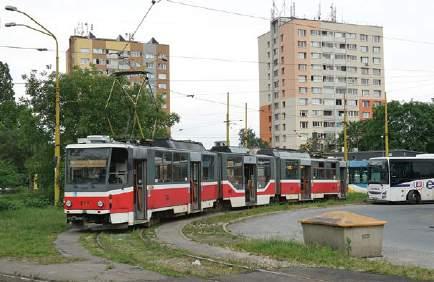
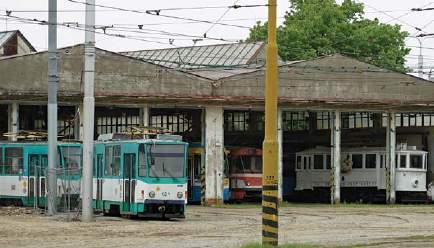

Opened: 1891 (Electric 1914)
l ines: 9 + 7 limited service
Depots: 1
approx. weekday hours: 04.30-22.00
l ine frequency: 15 minutes (with variations)
Gauge: 1435mm
Power: 600v dc, overhead supply c ity operator: Dopravný podnik mesta Košice www.dpmk.sk
timetable information: https://imhd.sk/ke/schedulestimetables
c ivic information: www.kosice.sk tourist information: https://visitkosice.org


ABOVE: Apart from a prototype in Ostrava, Košice is the sole operator of the TW Team Vario LF2+. The two low-level areas approximate to 43% of the
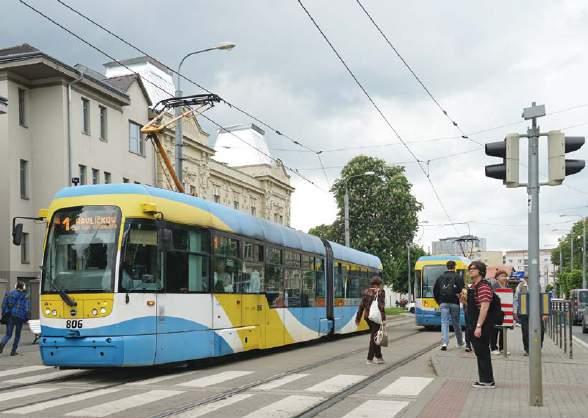

dedicated right of way, closely shadowing the Moldavsk á highway and crossing a spur road to the nearby airport. The tracks and lightly-used intermediate request stops have the basic appearance of unmodernised counterparts on the main system. A branch of the Ironworks route to the centre of Šaca was not implemented.
The works have two named stops, the smaller (Valcovne U.S. Steel) being for the rolling mills area. With signs forbidding photography, the multi-platform terminus (Vstupný areál U. S. Steel) and holding sidings at the main site entrance are within company property.
Only line R1 runs throughout the day, mostly hourly to Staničné ná mestie, with R2-R8 serving various points around the city. These lines, which are available to the general public, are bundled into intense periods relating to shift changes on the site. During these times, departing workers surge towards the platforms, yet with practised courtesy form orderly lines in exact positions for tram door openings.
Košice appears set to expand tram operations, including from the present termini of Halvíčkova and Socha Já na Pavla II, the latter a literal naming after the Statue of John Paul II sited within the
local travel: a ll of the tramway is in one zone, within which ticketing is time-based. a lso covering buses, it includes line 23 between the airport and the main railway station via the city centre. EUR1 for 30 minutes; EUR 3.80 for 24 hours and EUR12 for seven days. Tickets are available from machines. validation required at the initial vehicle entry; revenue protection by travelling staff (prices applicable as at s eptember 2023).
What is there to see? The staffed ‘Visit Košice Infopoint’ is at 59 Hlavná ulica. This is close to the principal single attraction, st. Elizabeth’s Cathedral, which originated in the 14th Century and has a viewing platform. o ther well-tended historic buildings and a concentration of restaurants and bars with outdoor areas are in this area. Bus-linked in a rural area north-west of the city, a former pioneer railway operates as a seasonal attraction: www.detskazeleznica.sk.
LEFT: The system’s crossing of the main railway line south of Košice is part of the Nad Jazerom branch added in 1983 to serve a string of housing estates.
BELOW: Modernised on-street space around Krajský súd. Trolleybus wires are integrated in the overhead equipment. Steel Arena is a combined ice hockey stadium and concert venue.
Barca return loop. These are the likely starting points for respectively northern and southern extensions.
Potential improvements on the U.S. Steel route include a branch for the airport and its adjoining modern industrial zone. At present when aircraft arrivals/departures coincide with demand generated by the business premises, the bus service can become inadequate.
A major tramway expansion with three access points from the present system is also envisaged. This is integral to the ‘Košice-Hornád –New Town Centre’ development on a 124-hectare mixed-use riverside site which is east of the railway near the main station.



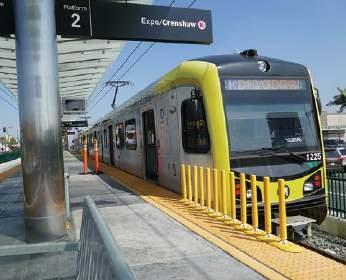





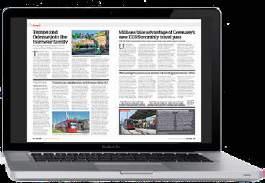
ARGENTINA
BUENOS AIRES. Tenders to supply 96 air-conditioned metro cars for ‘Subte’ Line B have been invited. Formed into six-car sets, they will replace most of its 1960s Mitsubishi cars. IRJ
AUSTRIA
GRAZ. Line 5 was closed between Zentralfriedhof and Brauquartier from 7 July, to enable double track to be installed. BS WIEN (Vienna). The latest Flexity , 361, was delivered on 21 September. E2 trams 40198/21/54/8-1/6/7/71/74 and 4302/6 have been withdrawn along with C5 trailers 1401/2/10/ 28/9/59/62/3/6/7/9/74. The option with Siemens for ten Type X six-car metro trains has been exercised, bringing the total on order to 44. BS, IRJ
BELGIUM
ANTWERPEN (Antwerp).
While modernised PCCs can still be seen on Lines 7 and 8, 14 withdrawn PCCs have been scrapped with four more to follow. T-2000
BRUXELLES (Brussels). Running resumed on Line 18 between Van Haelen and Albert on 28 August. This replaced the southern section of Line 51.
DE PANNE – KNOKKE. A ceremony at Oostende workshops on 23 September marked the withdrawal of the last 12 BN trams after 40 years of operation. These trams were built as six-axle cars in 1980-83, but were later extended with a low-floor centre section to become eight-axle trams. vrt.be
GENT (Ghent). May 2024’s tramway festival, which will mark 120 years of electric trams in the city, will now take place on 18-19 May and not 20 May.
M. J. RussellBOLIVIA
COCHABAMBA. The 900m (0.5-mile) Red Line extension from Estación Central San Antonio to Estación Antiga de Cochabamba opened on 14 September. The 3.8km (2.4-mile) Quillacollo – Estación Municipal Vinto extension of the Green Line opened on 21 September. urbanrail.net
SARAJEVO. The first of 15 air-conditioned three-section Bo’2+2’Bo Stadler Tango trams on order was displayed at the Gdansk TRAKO exhibition in Poland in September. The EUR30m contract was signed in August

2021 and includes an option for ten more. The Polish-built trams are 31.1m long, 2.4m wide and carry 180 passengers (79 seated). The first is expected to be tested on a Polish system before delivery to Sarajevo. cs-dopravak
VANCOUVER. The first of 41 Alstom Mark V Skytrain fivecar sets started testing at the Kingston plant on 22 August and should be delivered to Vancouver before the end of the year. They will replace the 1985 Mk 1 cars as well as working the Millennium line’s 5.7km (3.5-mile) Broadway extension. Mass Transit
CHILE
SANTIAGO. Passenger service started on Metro Line 3’s 3.8km (2.4-mile) extension from Los Libertadores to Plaza Quilicura on 25 September. skyscrapercity
CHINA
FUZHOU. Two Metro system extensions opened on 27 August: Line 4 from Fenghuangchi to Difengjiang (24km/15 miles), and Line 5 from Ancient Luozhou Town to Fuzhou South Station (5.3km/3.2 miles). urbanrail.net
HONG KONG. MTR Corporation celebrated 35 years of the Tuen Mun light rail system by holding a depot open day on 17 September. Five cars of different types were displayed outside the depot.
skyscrapercity
WENZHOU. The 63km (39-mile) suburban metro line S2 from Dongshan to Qingdong Road opened on 26 August. urbanrail.net
XI’AN . Metro Line 1 was extended by 10.6km (6.6 miles) from Fenghesenlingongyuan to Xianyangxizhan on 21 September. urbanrail.net
ZHENGZHOU. Metro Line 3 was extended by 6.3km (3.9 miles) from Yinggang to Binhe Xincheng Nan on 8 September. urbanrail.net
OLOMOUC. A small depot has been opened at Jeremenková terminus. Three covered sidings can accommodate 18 trams. RGI OSTRAVA. Operator Dopravní podnik Ostrava has advertised 14 withdrawn T3 (built 198287) and T6 (built 1996) trams for sale. DS
DENMARK
AARHUS. A tender is being prepared for eight to ten new trams. TR
FINLAND
HELSINKI. The 25km (15-mile) Jokeri Light Rail ( TAUT 1029) from Itäskeskus to Keilaniemi is due to open on 21 October. Each terminus includes a metro interchange. urbanrail.net
FRANCE
CAEN. The headway on T2 has been improved from every ten minutes to every eight minutes in response to an increase in demand from scholars and university students. lineoz.net
LE HAVRE. A tender has been issued for the supply of 18 new trams in readiness for the extension of the network. lineoz.net
LYON. The two-station extension of metro line B from Gare d’Oullins to Saint-Genis-Laval was to be opened on 20 October. Plans are being prepared for tramline T9 to link Charpennes with Vaux-en-Velin la Soie via Saint-Jean Centre. TCL MONTPELLIER . Lines 1 and 2 returned to their normal routeing with the change to the winter timetable on 4 September. lineoz.net
PARIS. Trial operation on T12 from Massy-Palaiseau to EvryCourcouronnes started on 11 September in readiness for passenger service, due to begin with the December timetable change. RGI
GERMANY
AUGSBURG. The new Stadler Tramlink low-floor tram was presented to the public at the depot on 22 September, while a farewell tour with a Duewag Stadtbahn M was due to take place on 3 October. DS
BERLIN. The 2.2km (1.4-mile) extension of line M10 to U-Bahn Turmstrasse opened on 9 September. The Senate has given operator BVG a financial commitment of EUR9.5m to prepare plans for the extension of U-Bahn line U3 to Mexicoplatz. Construction could start in 2026 for completion in 2030.
Services on S-Bahn line S15 from Hauptbahnhof to Wedding should start with 10 December’s timetable change. This is the first 4km (2.4-mile) section of the second new north–south City S-Bahn that will eventually reach


Schöneberg. The delivery of 106 class 483/484 S-Bahn sets was completed on 18 September. urbanrail.net, BS
BIELEFELD. Stadtbahn-M car 516 is to be restored as a museum vehicle. The work will be carried out at ABB’s workshops in Łód ź , Poland. DS
DUISBURG. The old Karl Lehr bridge in Ruhrort was closed from 22.00 on 24 September. Replacement buses will run until line 901’s trams start running over the new bridge in November. DS
DÜSSELDORF. Four preserved trams re-started services on line 714 from 17 September. They will only operate on Sundays. DS
ESSEN. Museum trams 144, 888+350 and 1753 took to the rails on 27 August to mark 130 years of the city’s tramways. DS
FRANKFURT/ODER.
Production delays at Škoda mean that the first car of the joint order with Brandenburg and Cottbus is not expected to arrive until spring 2024. BS
GOTHA. Ex-Basel tram 204 entered passenger service on 15 September, while Škoda lowfloor tram 1408 of the RNV (Mannheim) was demonstrated here from 20 September.
Gotha tram operator TWSB plans to order ten new trams for delivery from 2025. DS
HAMBURG. The planned U-Bahn line U5 is expected to cost between EUR14bn and EUR16.5bn to build. This qualifies the project for 75% federal support. DS
HANNOVER. New line 13 to Hemmingen is to open with the December timetable change. Line 9 will be cut back to Empelde. DS
KÖLN (Cologne). The Mülheimer Brücke over the River Rhine will close in 2024 for reconstruction work. The work is expected to take seven months but its impact on the tram network is not yet known. The latest HF6 Stadtbahn car, 5327, was delivered
on 1 September; car 5328 followed on 14 September. DS
LEIPZIG. Tram 1120 was launched as the Klimabahn from 16 September. Its new all-over livery highlights environmental concerns. DS
MAGDEBURG. Alstom is not expected to deliver the first of 35 new Flexity trams to the city until the second quarter of 2024. The first was due to arrive in late 2023.
MÜNCHEN (Munich). The final building permit for the 8.25km (5.12-mile) Tram West link was issued on 3 September. Construction should start in February 2024 from Romanplatz to Agnes-Bernauer-Strasse, Ammerseestrasse, Waldfriedhof and Ratzingerplatz. The new line is due to be complete by the end of 2028. DS
NAUMBURG. A state grant of EUR40 500 will allow 300m of 40-year old track at Marienring to be replaced. BS
INDIA
DELHI. Passenger services started on the 2km (1.2-mile) Metro Orange Line extension from Dwarka Sector 21 to YashoBhoomi Dwarka Sector 25 on 17 September. urbanrail.net INDORE. Alstom delivered the first of 25 three-car metro trains on 1 September. They will be used on the 31.5km (19.5-mile) Yellow Line, due to open in April 2024. RGI
INDONESIA
JAKARTA. Although the trial opening of the 42.1km (26-mile) Jabodebek ‘light rail’ took place on 17 August (TAUT 1030), regular commercial service did not start until 28 August. This metro system carried 29 000 passengers in the first two days of operation. urbanrail.net
ITALY
BARI – BARLETTA. Ferrotramviaria unveiled the first
of 11 Alstom Pop ETR 104 EMUs on 22 September. RGI
TORINO (Turin). The first three Hitachi Rail Italia 28m lowfloor trams entered passenger service on 11 September. The 70 new trams, being built at HRI’s Napoli factory, will gradually take over services on lines 3, 9 and 10. RGI
MEXICO
MEXICO CITY. CRRC Zhuzhou has delivered the first of nine two-section LRVs that are being supplied to the Xochimilco line under a EUR33m contract. They will be used to introduce a four-minute headway.
The first 18.2km (11 miles) of new 56.4km (35-mile) suburban railway from Observatorio to Toluca was opened on 15 September. J. May
NETHERLANDS
AMSTERDAM. The first test tram, comprising 3053 and 3063, reached Uithoorn on 23 August. Delivery of CAF metro sets was stopped after the arrival of 172+173. Technical problems have reduced their availability to just three sets on occasions. OR
DEN HAAG. Lines 2, 3, 4 and 6 returned to their normal routes and line 12 was re-introduced on 4 August after the completion of infrastructure work. OR
ROTTERDAM. Track renewal means that line 2 will be truncated at Beverwaard depot until 29 October. OR
NORWAY
OSLO. Delivery of CAF trams had reached 401-425 plus 443/446 by the end of August. LTF
TRONDHEIM. The tramline carried 1.1m passengers in 2022, the highest figure since 1990. LTF
POLAND
KRAKOW. Lines 18 and 50 reached the temporary terminus at Papierna Pradnickie from
4 September. The 5.5km (3.4-mile) extension’s new terminus, bus interchange and park-and-ride at Górka Narodowa is due to be completed within months. TP LODZ. Modertrans’ 100th Moderus Gamma was delivered in September. The city plans to buy ten 1990s vintage AEG GT6MZR double-ended, low-floor trams from the German city of Jena. TP OLSZTYN. Line 3 was re-introduced from 2 October after being suspended since January 2022. It operates hourly Monday-Friday, 06.00-20.00.
POZNAN. Moderus Gamma
LF05AC car 600 entered service on line 99 on 18 September. DS WROCLAW. The first test tram over the new 4.6km (2.9-mile) line to Novy Dwór ran on 25 August. Lines 13 and 23 started carrying passengers from 3 September. TP
PORTUGAL
LISBOA (Lisbon). The first of 15 new CAF low-floor trams for line 15 entered service on 22 September.
PORTO. Two bids were received for the construction of the Ruby Line from Casa da Musicá to Santo Ovídio. The results of tender evaluation will be announced in October. It is hoped that passenger services on this new light rail line will start in 2026.
IRJ
ROMANIA
RESITA. Tram testing on the city’s new tramway took place in August while delivery of the 13 new Durmazlar trams continues.
DS
RUSSIA
KALININGRAD. The authorities have decided to privatise GorTrans by the end of the year, through the creation of a joint-stock company. Yellow Tatra KT4 415 Theater Tram was sent for maintenance in September. J. Carpenter
Local politicians at the opening of the line M10 extension to Moabit in Berlin. T. Splittgerber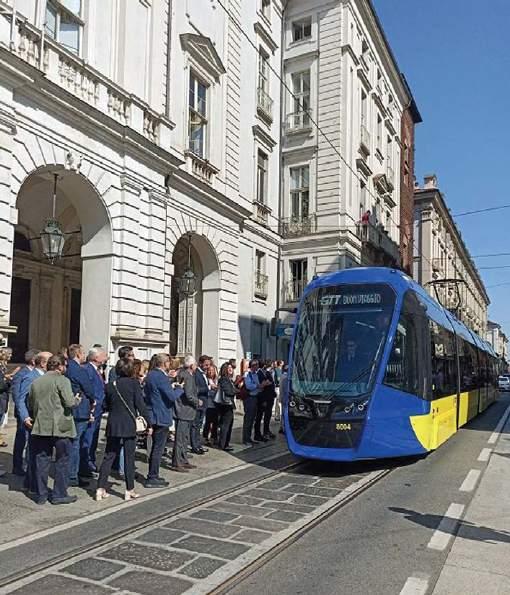
LIPETSK. UKVZ will deliver a further 44 71-628 trams by the end of 2025. transphoto.org
MOSKVA (Moscow). The 5.8km (3.6-mile) northern extension of line 10 to Fiztekh opened on 7 September. There is now an interchange with the MCD-1 commuter rail line at Lianozovo. RGI
SAMARA. Belkommunmash has delivered BKM T811 low-floor trams 1217/1218. transphoto.org
VOLGOGRAD.
ElektroTransportPlyus plans to supply 50 71-911EM Lyonok bogie trams and 12 double-ended three-section 71-932 Nevskiy in 2024. The city is receiving RUR8bn (USD82.4m) in regional and federal subsidies to repair and modernise its public transport system over 25 years. cs-dopravak
SOUTH KOREA
BUSAN. Woojinm Industrial Systems has won a KRW83.8bn (USD61.7m) contract to build nine new eight-car metro trains. RGI
SEOUL. The Seohae commuter rail line was extended by 6.8km (4.2 miles) from Daegok to Ilsan on 26 August. It shares tracks with the Gyeongui – Jungang line. Skyscrapercity
SPAIN
MADRID. Flooded tunnels, caused by torrential rain on the evening of 3 September,

expected to reach car 4055 by mid-December. BS
THAILAND
BANGKOK. The 34.5km (21.4-mile) Pink Line monorail from Min Buri to Nonthaburi is to offer free rides throughout November. Skyscrapercity
TURKEY
forced the closure of several metro lines the following day. BBC
VÉLEZ-MÁLAGA. Changes in the city’s administration over the summer have thrown plans to re-open the 4.7km (2.9-mile) tramway, which has lain idle for 11 years, into jeopardy. UTM
SWEDEN
LUND. The city’s public transport operating contract has passed from Vy Buss to Keolis Sverige. An electric bus network was inaugurated on 20 August. cs-dopravak
SWITZERLAND
BASEL. BLT articulated tram 220 has been refitted as the Bar Lounge Tram for private hire parties. With its distinctive gold livery, it contains 26 seats and a bar. Hire prices start from CHF800 (EUR828). BS
BERN. Line 8 returned to operation through to Saali from 25 September. EA
BERN – WORB (RBS). Double track between Egghölzli and Muri opened on 14 August. Line 6 returned to a normal timetable from 11 September. EA
ZERMATT – GORNERGRAT (GGB). To mark the 125th anniversary of the line, He2/2 3003 (SIG, 1898) has been gold plated for display at the summit station. It was unveiled on 20 August. TR
ZÜRICH. Delivery of Be6/8 Flexity trams from Alstom is
GEBZE. Turkish manufacturer Bozankaya has delivered the first of seven four-car automated trains for the under-construction 15.7km (9.8-mile) north-south metro line. Passenger services are due to start before the end of the year. RGI
UKRAINE
KHARKIV. Two six-car metro trains have been donated by the Polish capital of Warszawa (Warsaw). RGI
KYIV. A EUR79.2m contract for ten five-car metro trains has been awarded to Kryukovsky Railway Car Building Works (KVSZ) of Kremenchug. It is being financed by the European Bank for Reconstruction & Development. RGI MARIUPOL. Sankt Peterburg has delivered a replica LM99/33 tram. Car 7880 is understood to use the bogies and frame of 2005-built LM-99 3304. transphoto.org
VINNITSYA . Ex-Zürich Be4/6 trams have been re-numbered 400-413 in the local fleet. BS
UNITED KINGDOM
BLACKPOOL. The tramway continues to equip its Flexity 2 fleet with ODAS (Obstacle Detection Assistance System) safety equipment, which provides automatic braking. The latest tram to be fitted is 012; others include 001-3/16/7.
EDINBURGH. The return of the Sherlock Holmes statue to Picardy Place after five years in store is a symbol that the Newhaven extension is complete.
It is situated close to the site of 11 Picardy Place, now demolished, where author Sir Arthur Conan Doyle was born.
MANCHESTER. Metrolink services moved closer to a return to normal after the COVID pandemic with the resumption of the Monday-Saturday service from MediaCityUK to Etihad Campus on 25 September.
The maximum penalty for fare evasion on Metrolink was increased by GBP20 to GBP100 (EUR116) on 24 September. The heavier clampdown coincided with the launch of the Bee Network bus operation (see TAUT 1029), as well as being a response to the 55 000 cases so far this year (6000 ended up in court). More ticket inspectors, many in plain clothes, have been recruited. The fine is reduced by half if paid within 14 days.
NOTTINGHAM. A tram derailment at Bulwell on 21 June has contributed to a poor performance record on Nottingham Express Transit. In the two months for June and July, reliability fell from 95.4% to 91.3%, and punctuality from 93.8% to 91.4%. Damaged tram 232 has been at Wilkinson Street depot awaiting repair assessment. Other operational headaches have been a triple murder in the city centre on 13 June, a fatal stabbing on a tram at Highbury Vale on the 16th, a control centre communications failure on 2 July, and three separate incidents 12 days later.
Permanent way repairs have been booked for the Central College – Cator Lane section, which suffered severe flooding earlier in the year.
SHEFFIELD. Supertram’s Siemens tram 105 returned on 30-31 August after the completion of accident repairs at Brodies in Kilmarnock. It has been out of service since colliding with a lorry near Hyde Park in July 2021.
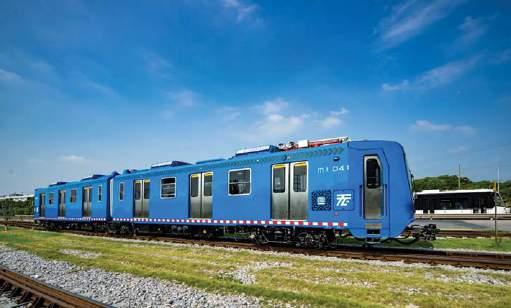
STOURBRIDGE. The Stourbridge Shuttle in the West Midlands has now carried seven million passengers since the two Parry People Movers took over the 1.3km (0.8-mile) Network Rail branch in 2009. It is run by Pre Metro Operations.
USA
BALTIMORE, MD. The first of 78 new Hitachi metro sets was delivered in September. However, they are not expected to carry passengers until 2024, three years late. skyscrapercity BOSTON, MA. The Ashmont – Mattapan tramline and the subway Red Line between JFK/ UMass and Ashmont were to close from 14-30 October to permit track repairs. Replacement buses were to be used. Mass Transit CHICAGO, IL. The 9km (5.6-mile) CTA Red Line metro extension project is likely to get a USD1.97bn grant from the Federal Transit Administration in 2024.
The line, from 95th St to 130th St, is expected to cost USD3.6bn (EUR3.4bn). J. May
LOS ANGELES, CA. Opening of the light rail Regional Connector in July prompted a 15% increase in light rail patronage. Headways were improved on metro lines B and D from 10 September. J.May
MILWAUKEE, WI. The first test runs on The Hop tramway extension to the lakefront took place on 21 July. Passenger service on the L Line is expected to start in late October (initially, Sundays only). P. Ehrlich
NEW YORK, NY. The IND 63rd St subway line closed on 28 August for major track reconstruction. All F trains are to operate via 53rd St. until work is finished in November. ERA
PHOENIX, AZ. STV Inc has been appointed lead planner and designer for the Tempe Streetcar extension to Mesa (Rio East-Dobson). J. May
SAN FRANCISCO, CA. Bay Area Rapid Transit withdrew its last legacy cars from
11 September in a bid to reduce costs. Eight-car trains are now reduced to six cars (except on the Antioch – SFO line) and the headway remains as 20 minutes. Patronage is still 45% of 2019 levels. Mass Transit
SEATTLE, WA. The first section of the East Link light rail project from South Bellevue to Redmond Technology is due to open in spring 2024. Sound Transit has approved a budget of USD43m (EUR40m) to finance the preparations. J. May
WASHINGTON, DC. The metro Red Line will be closed from 18-30 December for critical safety repairs. R. Barrows
MUSEUM NEWS
BEAMISH (UK). Three former Tyne & Wear Metro drivers are enjoying their retirement as underground guides at the museum’s colliery.
BRIGHTON (UK). The Volk’s Electric Railway’s 140th anniversary was celebrated in August with a procession of all operational cars in the fleet, including ex-Southend car 9. It was purchased over 60 years ago and has not run since the 1990s. It was diesel-hauled.
CRICH (UK). Sue Whitley has been named as this year’s President of the Tramway Museum Society, which owns and operates the National Tramway Museum at Crich Tramway Village. She succeeds Bob Pennyfather. She has been a volunteer since 1997 and is a workshop volunteer and conductor.
GENEVE (CH). 1920 SIG bogie trailer 369, which forms part of the city’s heritage fleet, has been restored to 1950s condition at a workshop in Winterthur. BS
HEATON PARK (UK). The tramway was to stage its end of season gala on 1 October, when five trams were expected to be operational: Stockport 5, Hull 96, Blackpool 619, Blackpool 623 and Manchester 765. There is however another running day on the 21st.

SEATON (UK ). The Modern Electric Tramways charity wants to increase its number of board members from the present five and is looking particularly for young people, as well as those with disabilities, and from diverse backgrounds.
SCHÖNBERGER STRAND (DE) . The 30th anniversary of the museum tramway in northern Germany was marked on 9 September with all its preserved trams on display. A parade ran at 15.00. DS
SYDNEY (AU). The South Pacific Electric Railway Society (Co-op) Ltd made history on 26 August when it elected its first ever female board member. Fay McCabe, who co-incidentally was the first certified female tram driver in New South Wales after being certified in the late 1970s as a teenager, joins the board of the society which runs the Sydney Tramway Museum at Loftus, NSW. A. McCabe
TELFORD STEAM RAILWAY (UK). The estimated cost of a replacement vertical boiler for the railway’s 609mm- (2ft-) gauge steam tram has fallen from
GBP20 000 to GBP 8500 (EUR9800). A fund-raising appeal is running for the tram, which last ran in 2019.
Worldwide items for inclusion should be sent to Michael Taplin at Flat 8, Roxan Villa, 33 Landguard Manor Rd, Shanklin, Isle of Wight PO37 7HZ, UK. Please fax: +44 (0)1983 862810 or e-mail miketap@mainspring.co.uk
UK and Ireland items are welcomed by the Home News Editor, John Symons, 17 Whitmore Avenue, Werrington, Stoke-on-Trent, ST9 0LW, UK. E-mail uknews@lrta.org
Acknowledgements are due to Blickpunkt Straßenbahn (BS), cs-dopravak, Eisenbahn Amateur (EA), ERA, International Railway Journal (IRJ), lineoz.net, LTF, Mass Transit, Op de Rails (OR), Railway Gazette International (RGI), skyscrapercity, TCL, Tram-2000 (T-2000), transphoto.org, Transport Publiczny (TP), urbanrail.net, vrt.be, and Urban transport Magazine (UTM).



matt@mainspring.co.uk

Letters submitted by post should be clearly typed and preferably not handwritten. We reserve the right to edit contributions for publication.
Sadly, the regulatory regime in the UK continues to be degraded by the predominance of heavy rail mentalities traceable all the way back to the Railway Inspectorate’s low-key response to the implementation of Metrolink Phase 1.
It was arguably the lacklustre performance of the contractors and their railway consultants and regulators to discount the finest readily-available tramway experts including John Markham, Mike Harrison and Bob Hall, not to mention Crich generally, as well as sidelining GMPTE with all its accumulated tramway expertise.
The TMS has in recent years also sidelined tramway experts including John Markham and Mike Gilks, as well as many others, which is sad. What an odd creature is a tram enthusiast with no interest in tramways.
My suspicion is that ‘the industry’ and its regulators are railwaymen trying desperately not to be tramway-men. Until they snap out of that mindset, we’ll remain in a state of tramway mediocrity in the UK.
In Munich (Germany), I was recently delighted to admire the creations of true tramway people, creations that we are such a long way from replicating here
A Venetian visit
The letter from Jim Darroch rang a bell with me. I have just been to Italy, including a first ride on the Venice tramway.
Firstly, it is not visible from Mestre station, though I saw a small sign – you have to walk to the bus station at the far end of which is a lift door.
There are no ticket machines on the platforms. There was a long interval – it was 5pm on a Friday. The ride was poor with many stops at, seemingly, traffic lights.
However, at Mestre Centro there was a decent ticket machine, though I only paid EUR1.50, which may not have been enough.
The ride to Venice was much quicker and better, with great views of and from the viaduct.
Malcolm Chase, Fleet, UK
Montréal REM
Paragraph 4 of the news story about Montréal’s private metro on page 332 of September TAUT is a little misleading.
in the UK. The Grand Union junction at Ostfriedhof, with naturally flowing track geometry and corresponding pre-sorting point-work throughout, is particularly splendid – and as the icing on the cake, there’s a very ‘busy’ combined traction and street lighting pole hidden by a cladding of ivy.
The curves are not circular – they only have circular cores, with transitions at either end. Also note that neither of the ‘through’ roads are straight or in line with each other.
In these ways the Ostriedhof Grand Union is similar to the 1937 Salford Grand Union at present interred unloved at Crich – real works of art largely unappreciated. Similarly wonderful tramway engineering can be seen in Basel (Switzerland). At the same time, it’s very frustrating to see it there but not here, not even at Crich.
David Holt, by
throughout, is particularly splendid
– says David Holt, suggesting that regulators in the UK could learn much from their European counterparts.
David HoltAs the first paragraph of the report states, the first section to open was south from Gare Centrale; this does not use the Mont Royal tunnel.
It will be the second section to open that will run through the tunnel, together with the new stations at McGill and Édouard-Montpetit.
Geoffrey Tribe, by e-mail
In TAUT 1028’s Mailbox, your correspondent asks what bus would have the same impact as the Tatra tram. Perhaps he has not heard of the London Routemaster, which entered squadron service in 1957 after years of testing?
The last London route using them, the 159, was converted to OPO buses in December 2005. Tourist operation continued on a limited scale until 2019, however they found ready buyers after 1986 all over the country. Many were used in Scotland, but could also be found in the
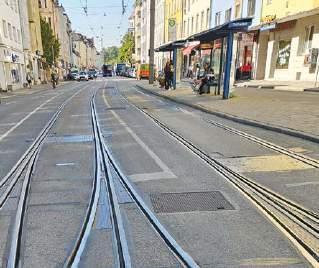
English Corporations in Blackpool, Burnley, Southend and Southampton, along with large company operators, Cumberland, East Yorkshire, United Counties and East Midlands, along with penny numbers elsewhere.
Londoners still miss their Routemasters
Tony Smith, Canterbury, UK
Gremlins got into our feature about Newcastle’s Metro Flow in the last issue. The incident that led to Network Rail addressing improvement notices was not the 2016 Sandilands derailment, but when a South Western Railway service derailed near Wimbledon on 6 November 2017. It derailed on a link between Network Rail and London Underground metals, which is owned and maintained by both parties.
This led to RAIB issuing interface management recommendations.
We apologise for any confusion caused.
Richard Foster, via TAUTSomething is stirring in the Belgian woods. Could it be wild boar or other prowling animals? No, it is a Vicinal Autorail, signalling the revival of an historic heritage tramway.
Mike Russell has been to explore.
Restrictions imposed during the COVID pandemic had a profound impact on many heritage tramways in Europe and beyond. One of the saddest affected was the Tramway Touristique de l’Aisne (TTA) in the Belgian Ardennes. Operation had been somewhat fitful for a number of years, blighted both by shortages of staff and rolling stock unreliability, such that by 2020 the whole operation was almost moribund.
Planning a speculative visit to this remote line became risky because of the likelihood of meeting one of many suspensions of service, and by 2022 only occasional journeys were operated. For this earliest of all Belgian tramway heritage operations, opened in June 1966, the future looked desperately bleak and many believed it would cease completely at the end of the 2022 season.
Then a miracle happened. The TTA’s line is laid wholly within the Province of Luxembourg, a region rich in beautiful scenery and historic buildings but with little industry aside from forestry to support its population. The TTA line is a cut-back of a once much-longer U-shaped route totalling over 60km (37 miles) that linked Melreux and Manhay, serving a host of small communities to which its operations were a lifeline; the 11.2km (seven-mile) section that survives was opened in stages in 1909-11.
Exceptional in its great length, it was otherwise typical of many former Vicinal rural lines, worked initially by steam trams and later by Autorails until the all-conquering motor bus took over passenger services in the late 1950s. That some of this line has survived at all is remarkable and a tribute to visionaries who realised its potential over 60 years ago. Now the local authorities have stepped in as patrons and, not wishing to lose an important tourist attraction in the region, have played a major part in promoting its renewal.
Although much work was started by the previous team of volunteers, an important step forward was achieved recently by the establishment of a completely new Board of Management, comprising representatives of the two municipal councils, Érezée and Manhay, together with a group of sympathetic tramway enthusiasts. Critically, the new board has formed a new link with the established ASVi museum line at Lobbes-Thuin, a move that will in due course prove of mutual benefit, but initially will bring ASVi’s invaluable experience to bear on TTA resuscitation work.
Those who toiled behind the scenes to set up the new board did not wait to start rehabilitation of the line; work that had already been started by TTA volunteers before the pandemic was accelerated and finalised. The diesel-engined draisine works car 9594 (Plasser & Theurer, 1980), well known as one of the Vicinal works cars active in the 1980s for the reconstruction of lines 80 and 90, played an important role. It carried out all kinds of work as the fleet of four TTA Autorails was nearly dead, with just AR.133 surviving.
Car 9594, inactive for decades, was transferred from Anderlues to Blier in late summer 2018 during a clean-up operation of the Anderlues site by TEC.
The entire line, with rails and sleepers, was inspected and replaced where necessary. Lineside foliage was stripped back, with 1.5m clearance each side of the track in railway fashion to ensure a clear passage for the trams and remove risk to passengers. The first item of rolling stock – Autorail AR.133 – was taken out of the depot at Blier, checked and repaired, and the entire operation – tramcars, infrastructure and lineside equipment –presented for a formal Ministry inspection in late July. Full credit must be awarded to the working party for the quality of its work, which resulted in this inspection being passed with flying colours, allowing operation to be resumed from 26 July. The Ardennes countryside once more resonates to the throaty roar of the Vicinal Autorail
Clearing the entire track was a major operation; for example, the sidings and passing-loop at Dochamps had been completely obscured by unchecked vegetation. Any visitor to Blier depot in recent years will need no reminding that the 37 items of rolling stock have been stabled in haphazard fashion and many have not turned a wheel for years. Amongst these is a flat-wagon bogie trailer submerged amongst the long grass, which turned out to be of invaluable service in transporting surplus wheel-sets during the depot clearance.
None of the rolling stock has been disposed of but all has been repositioned in a logical manner ready to receive much-needed attention in due course. This is the work of several years, but if this season’s efforts are anything to go by there will soon be several items of rolling stock traversing the line that have not been seen for many years.
The new board has several projects in mind to improve the visitor experience.

One objective of the new link with ASVi is to enter into periodic rolling stock exchanges. The TTA line originated with steam traction, and when first designated as a heritage line regular steam operation was a feature. This ceased in 1989, but one steam locomotive remains. It is firmly intended that steam operation will be resumed, although no timescale prediction can yet be made.
Pont d’Érezée, about 7km (four miles) from Hotton, is the line’s official starting point. Considerable improvements have been made to terminal passenger facilities, with an enlarged covered waiting area with toilets, an enquiry and ticket desk, and an area equipped with tables and chairs. An attractive guidebook (EUR5) is on sale here. A museum building has also been built, which currently houses steam locomotive HL.1075, ‘royal’ trailer A.165 of 1904, and enclosed passenger trailer A.1348 of 1909. Nearby there is a children’s playground and small amusement park.
The 2023 timetable features three journeys: departures at 13.30 and 15.00 from Pont d’Érezée to Forge à la Plez, and a final one at 16.30 all the way to the ultimate terminus at Lamorménil. There are no advertised return times, but as a rule the trains wait for around ten minutes at their respective termini, whilst the motor car runs round and is re-coupled to the trailers. Operation from 26 July and in August was on Saturdays and Wednesdays and an autumn service has been introduced on Saturdays only in September and October (last operating 28 October). The timetable is identical on all days. Adult return fares between Pont d’Érezée and Forge à la Plez are EUR10, while the return fare for the through journey to Lamorménil is EUR15.
TTA’s biggest disadvantage is its relative inaccessibility, especially in a country where rural bus services have been reduced to a level even lower than in the UK. It is currently impossible to travel both to the line and return from it by public transport on any day during the summer season. For those without private transport, the only really practicable solution is to take the TEC bus from Namur to Hotton (Mondays-Fridays) and hire a taxi to Pont d’Érezée, and vice versa for the return.
At a time when several UK heritage tramways are suffering at the hands of officialdom, what a refreshing change it is to learn of such a welcome re-awakening in Belgium, actively supported by local authorities.
With grateful thanks to Luc Koenot for additional reporting.

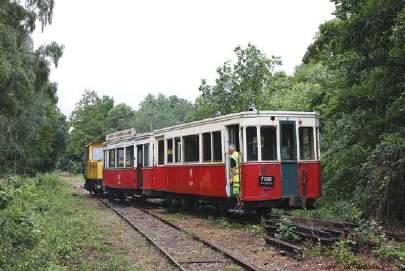
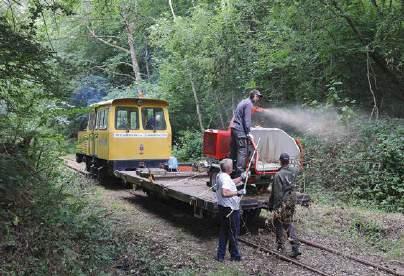

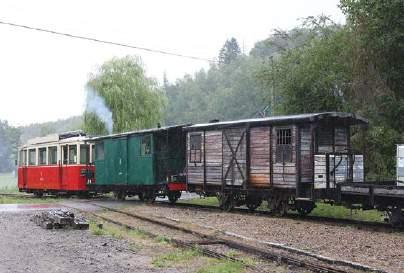


1. The only steam tram locomotive on the TTA rolling stock roster is 1919 type 18 HL.1075, built by Les Ateliers de Construction Grand-Hornu. It is displayed in the newlyconstructed Exhibition Hall at Pont d’Érezée. Mike Russell
2. News of the renaissance and re-opening of the TTA travelled fast, and less than three weeks after the inaugural journey a three-car set was necessary to convey passengers. Autorail AR.133, with baladeuse trailer A.8944 of 1916 and enclosed trailer A.1344 of 1908 in tow, is leaving Pont d’Érezée on 12 August. Mike Russell
3. The ex-SNCV draisine 9594 shunts two long out-ofservice cars at Blier on 15 July. Nearest is A.2115, a 1920-built second-class brake trailer for steam service. Ahead is trailer A.10760, also built in 1920 but for electric service. Luc Koenot
4. During extensive clearing of the depot at Blier, several vehicles that had not seen the light of day for years were moved onto open access tracks. Hauled by Autorail AR.133 on 15 July are A.2355 (a brake wagon for steam service from 1899) and a wooden freight wagon, A.18253, from 1926. Luc Koenot
5. Extensive lineside work had to be undertaken before the TTA route was in a state suitable for official inspection. To assist in vegetation clearance, the former TEC draisine (SNCV 9594), at Blier depot since 2018, was pressed into service – seen in action on 13 July 2023. Luc Koenot
6. A longer rake of rolling stock outside Blier depot on 15 July with second-class trailer A.1208 for steam service dating from 1907 (nearest), one of several cars approved for passenger service. Luc Koenot
7. Retrieved from the depths of the overgrown tracks at Blier is this bogie flat wagon, A.8139 built in 1914 by La Métallurgique, that proved invaluable in moving many wheel-sets during depot clearance; wooden-bodied Standard trailer 19669 of 1930 (formerly motor car 9817) is sandwiched between it and Autorail AR.133. Luc Koenot
8. An impressive rake of mixed rolling stock during shunting operations at Blier on 15 July. Behind Autorail AR.133 are A.2355, A.18253, flat wagon A.7295 and hoist wagon A.4149. The two enclosed trailers in rear, A.1208 and A.1344, are members of the current fleet.


TramForward believes that it has helped change the negative attitudes towards the introduction of light rail in Glasgow, Scotland’s second city, by dispelling the myth that LRT is too steep a hill to climb.
It has come through hard work and persistence, and what information is in the public domain does not include the myriad of behind-the-scenes activity such as lobbying, research, and providing advice.
The LRTA, Light Rail (UK) and All-Party Parliamentary Light Rail Group (APPLRG) continue to represent the movement at the Holyrood Cross Party Parliamentary Transport Committee, which is chaired by Grahame Simpson MSP. We have also joined Transform Scotland, which campaigns for public transport, walking and cycling as the easiest and most affordable options for everyone.
We found Transform Scotland initially hostile towards trams because of the early Edinburgh tram fiasco. It has now taken on board all our arguments including the ‘Oslo Effect’ on emissions, which is causing it some heartache along with its sponsors from the bus industry.
A large pro-tram response was given to a public questionnaire, and we look forward to learning the results. We have had four meetings during the last Holyrood parliamentary session.
In conjunction with the APPLRG and Light Rail (UK), the LRTA has made several presentations to Glasgow city councillors, culminating in a challenging encounter that countered recent reports by Aecom and Glasgow University.
We were confronted with negative phrases such as “We have no money, and besides, trams are now off the national menu.”
Together with the late Dan Giblin, we put together a private finance project that we believe has given the council quite a surprise. It was decided that it was rather too hot to
handle, and it has been forwarded to the Scottish Government.
We had included the subject of Very Light Rail technology, and the option of using hydrogen on two main routes, East – West and West – East. This has resulted in the energy minister asking Transport Scotland to reinstate trams into the National Mode Option.
It also led to a significant report – Strategic Transport Projects Reviews 1 and 2 – which establishes the Glasgow Metro provisions. The timeline of 25 years in the first document was challenged and shortened in the second one, which can be found at www.transport. gov.scot/media/26366/j11260a.pdf·PDF file
It is significant that all the track maps were virtually a cut-and-paste job of the collective work that was submitted some time ago, and which can be seen at: https://applrguk. co.uk/media/files/LR-UK-Let-Glasgow-flourishAGAIN-Mar-2021-V5apdf
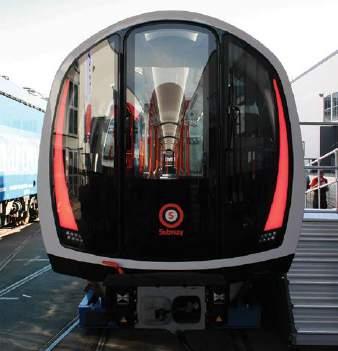
ABOVE: First shown at InnoTrans in 2018, Glasgow’s new trains will be the same length and size as the current trains, but made up of four carriages. The first was delivered in May 2019. TAUT
DECEMBER
Monday 4. Merseyside 19.00 for 19.30. Annual Christmas party dinner. Advance bookings only. Sefton Park Community Association, 3 Croxteth Drive, Liverpool L17 3AG. Contact: merseyside@tlrs.info. (TLRS)
Tuesday 5. Southampton 19.30. Steve Dungay: North American railcams. Eastleigh Railway Institute, £3. (LRTA/SEG)
Tuesday 12. Leeds 19.30. Members slides and videos. The Engine House, Middleton Railway, Moor Road, Leeds LS10 2JG Contact: leeds@lrta.org.

Thank you to all those members who have responded and completed the recent LRTA Members’ Survey, either online or by sending their replies through the post.
Over 75 members completed the survey with responses coming from as far apart as the USA, Denmark and Germany, as well as from across the United Kingdom.
The replies are now being analysed and a report will be presented to a meeting of Council and through the pages of TAUT.
Members indicated an enthusiasm for the use of more electronic and online forms of communication, including online talks and e-mail newsletters. In the next few months we intend introducing e-mail newsletters as part of our new area structure.
Several people have volunteered to give online talks, and we are already implementing one suggestion by featuring reports on new tram systems which we are campaigning on.
In last month’s TramForward page, we ran an obituary for Gordon Shanks – however, the title was misprinted as ‘George’ Shanks.
We would like to offer our sincere apologies for this error and any unintended upset this might have caused.
Compiled by the LRTA. For a full list of the year’s events and meeting places, including online meetings, visit www.lrta.org
Donation £1 (inc. mince pies and light refreshments). (LRTA/LTHS)
Wednesday 13. Sussex 19.40. Sussex Group: Christmas tram feast. Southwick Community Centre, Southwick Street, Southwick, BN42 4TE. Contact: sussex@tlrs.info £2. (TLRS).
Saturday 16. Nottingham 14.00. Tramway films. Beeston Scout Hut, NG9 1GA Contact: alo@tlrs.info. (TLRS)
Tuesday 19. London 14.30. Mike Russell: Germany (both East and West) 50 years ago. The Model Railway Club, London, N1 9DA. £2. (LRTA)

Order online from www.lrta.info/shop – or by post from:
LRTA Publications, 38 Wolseley Road, SALE, M33 7AU
(Please provide telephone contact details and quote LRTA membership number if applicable)
Outside UK = Airmail to Europe (includes all of Russia) / Surface mail to rest of world; Airmail Zone 1 = outside Europe excluding Australia, New Zealand & USA; Airmail Zones 2/3 = Australia, New Zealand & USA

This book celebrates the return to original condition of the 1931 experimental London County Council tram, telling its story from outline drawings through operation in London and Leeds, to display in the first British Transport Museum and a new life at Crich Tramway Village.
> A4 hardback; 224 pages, 330 colour and black & white pictures, four maps.
£38.50 (UK addresses); £49.50 (outside UK); £58.50 (Airmail Z1); £63.50 (Airmail Z 2/3); LRTA Members: £3.50 discount


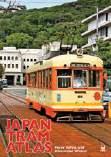
A comprehensive review of the tramways and trolleybuses of Japan with superb track maps for every system. Details of the car types operated and the routes on which they run are covered. English and German text.
> A4 softback; 272 pages, 423 colour and black & white pictures, 48 track maps.
£36.50 (UK addresses); £46.50 (outside UK); £56.50 (Airmail Z1); £61.50 (Airmail Z2/3); LRTA Members: £3.25 discount
Following the success of our first calendar aimed at raising funds for the people of Ukraine, the 2024 Mike Russell Electric Traction calendar includes a further selection of full-colour images of trams and trolleybuses at work in seventeen Ukrainian cities, together with a location map and list of world systems.
£15.00 (UK addresses); £18.50 (outside UK) No member discount on calendars
Minimum of £5 from each sale will go to the Disasters Emergency Committee Appeal – if you’re able to donate more your help will be appreciated.
High quality photo album of the Welsh capital city’s network, which operated from 1942 to 1970 on ten routes, plus the unusual short but very busy single-deck service to the Pier Head. Each route is covered in turn and a fleet list is included.
> A4 hardback; 168 pages; 194 black & white (22 full page) and 67 colour (ten full page) pictures and 17 maps.
£38.50 (UK addresses); £47.50 (outside UK); £57.50 (Airmail Z1); £61.50 (Airmail Z2/3); LRTA Members: £3.50 discount
8: From the Beach, Venice Short Line, Santa Monica to Los Angeles
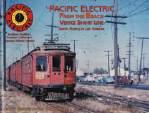
Latest in the series of photo albums covering what was once the largest interurban network in the world.
> A4 softback, landscape format; 68 pages, 58 full-page black & white pictures; three maps.
£25.50 (UK); £32.50 (outside UK); £38.50 (Airmail Z1); £42.00 (Airmail Z2/3); LRTA Members: £2.25 discount
For further details of all these books go to our website.

Order direct from the website shown (not from the LRTA)
Croydon: Tram to Tramlink
Tells the story of the town’s second generation tramway, inaugurated in 2000 – sadly the only such installation in the Greater London area – and the former tram and trolleybus services which ran until 1951 and 1960, respectively. A fascinating account of the complexities of delivering new light rail systems in the UK.
> A4 softback; 96 pages, 12 black & white and 180 colour pictures, three maps.
£19.95 – www.platform5.com

Mit der Straßenbahn durch das Berlin der 60er Jahre
Band 13: Die Linien 77/78, 83 und 85 Band 14: Die Linien 84, 87 und 88
Two albums of images of a Berlin all but disappeared, covering routes in both the west and the east of the city. German text.
> 210x240 mm hardback, landscape format; 96/112 pages, 100+ mainly black & white pictures, five maps.
EUR22.80 (13) EUR28.80 (14) – www.lok-report.de
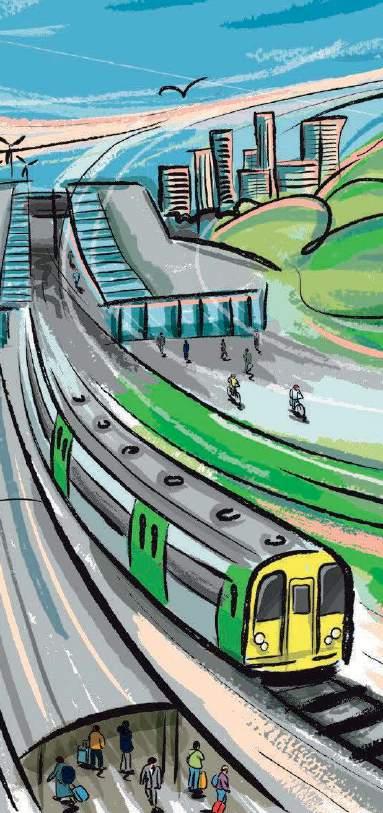
Begin with a vision to optimise every journey.
Begin with the global heritage of a rail transport specialist.
Begin with innovative thinking and digital technology.
Begin with multi-disciplinary end-to-end support.
Begin with SYSTRA, your partner in redefining the future of sustainable transport and mobility.
INNOVATIVE. SUSTAINABLE. EFFICIENT. CONNECTED.
